#(playing with a controller that actually has a working left analog stick probably has something to do with it lmao)
Explore tagged Tumblr posts
Note
/735662509094289408
oh but it does ruin the friendship. ~the angst commences~ imagine him toying around with someone, only because his own life is so difficult to control and he’s sick of it. he’s sick of his life being so unpredictable and troubled, so he resorts to using someone else’s to play around and have fun with. he’s the puppet master and the poor person just takes it because they actually love eddie💔💔💔he wants to kiss them one night (because he feels particularly unlovable that day so what better way to release the pain by inviting his ‘friend’ over) and tells them exactly that, “a little kiss wouldn’t hurt our friendship”
so they kiss. and it all goes to shit. they go off on eddie, “i can’t do this anymore! you’re playing with my feelings and it hurts me so much…do you have any idea what you’re doing to me?! i can’t stick around you anymore, i’m out of here,”
and then eddie is left to think about what he’s done.
anyway sorry for the random story, i was just thinking about it cuz i sure love me some angst <///3 and i think it’s interesting to look into a side of eddie that wouldn’t be particularly likable. lmk what u think tho. do u think eddie would come to develop actual real feelings for this person? would he even apologize at all and would it even work out?
ok i’m done now hope u have a good day :) ✨
nono don't apologize i love the story, thank you!! also i love the puppet master analogy, obviously because of master of puppets, but also because I used to be a puppeteer at a local theatre company!! you're speaking my language lol
i'm just gonna put a read more here so that this isn't a long post, and clickable link here to the referenced post!
I also really like the whole 'unlikable' kind of characters thing, and especially with Eddie's background, I always think that him serving those sorts of motifs produces very fascinating storylines. Canonically he has such strong redeeming qualities, that I think giving him some bad qualities never seems all that terrible, plus its just fun and interesting to read! In terms of how it would end, in my opinion, I think it definitely depends! Sorry thats kind of a bad answer but it could go so many ways? Like in some scenarios it could be the catalyst to them getting together, but it also could be the catalyst of things going really wrong if Eddie isn't willing to change. I also think that if Eddie were to pick on someone it would be because he already likes them to start with, so he would have to go through a lot of internal processes to come into his own, and eventually be able to move forward for sure!
Side note— I've actually been working on a sort of 'morally grey' characterization so I'm interested which ending is your preference? Like angst angst or happy ending? (my thing's already written, I just haven't had it in me to edit it, but spoiler its kind of like those movies where nothing happens but everything changes, but also nothing changes? very unproductive storyline but I think that in itself is valuable because life follows that storyline quite frequently).
I read a fic before kind of like your story so i just went for a deep dive looking for it lol I think you might like it! You can click here for it :) This one is from Eddie's pov so theres a lot of his internal processes, and I think it's just a good read.
Another fic that comes to mind is a series. It's a bully!eddie three part-er (i think) with a pick your own ending (which i think is soso cool and you don't see very often), so maybe you'd want to check that out too! Link is here for that one! I also like how this one gives a preface to why Eddie becomes a 'bully' and I just really like the story in general!
If either links don't work, let me know! I'll probably reblog them after this too :)
sorry this was so long omg, but thank you again for sending me your story, I truly appreciate it and love it sm!! (also i saw your other ask and I want to write something for it but it might take me a while with exams and everything come up, sorry!)
5 notes
·
View notes
Note
dg you MUSNT play 9btn on popn portable. it will KILL YOU !!
but for real, i usually just stick to 5 button whenever i play popn portable, doing anything more just feels REALLY wack... at least to me. 5 button is really fun though !!
At this point dying by rhythm game is the usual asjdkasdkjasdha
I genuinely want to learn full 9 button pop'n tho! Ive been meaning to properly get into the series for a long time... but I probably wont shoot for that on PSP actually!!
Ive never experienced a more unintuitive control scheme on a home console port of a rhythm game (for 7-9 button mode, 5 button works pretty well!)
bemani is insane.
I could try to figure out something with the vita's extra mappable buttons and right analog stick to make it less of a headache
Like this control scheme with the right stick set to the left analog stick?? maybe???
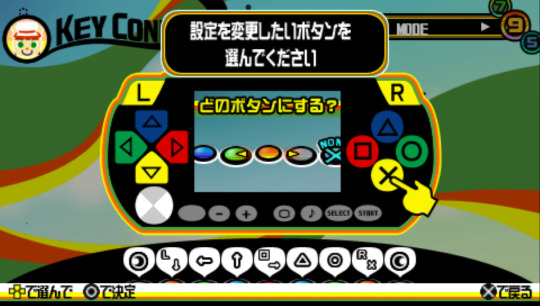
Egh. I should probably just get a dedicated controller like the PS1 pads if I really want to get serious with the series... and maybe just play one of the PS2 ones in general (11 has caught my eye for the longest time)
Until I figure something out; ill settle with 5 buttons as it is pretty dang fun and I cant lie and say the songlist isnt surprisingly robust.
#I do see myself gravitating towards pump it up more for my portable rhythm game fix outside of taiko in all honesty#Pop'n is still a goal I want to work on for a long time but its control scheme is both my main hook... and my main deterrent from it#its just a nightmare to translate to a home console pad#I will get a whole set up going in the future. Ive been slacking on Bemani games for too long#also one more note. good lord no pause button??? oh godddd
1 note
·
View note
Text
Daily Blog #15: August 22, 2021
Dollar Tree is honestly pretty fucking awesome 👌👌👌
I set my alarm for like 6:25 this morning, but it took 6 minutes for the "Horsin' Around" theme song instrumental to wake me up. I was pretty tired lol. I just dismissed it and went back to sleep.
I only went back to sleep because I knew I had another alarm set for 7:00. That got me up.
I should mention that this was still in the RV over an hour away from the house.
After I got up, I went to go get a shower, and did so successfully.
Unfortunately, I had forgotten my brush this time and had to do it afterwards after my hair had a bit of time to dry, which did make it a little more difficult lol.
I got dressed and grabbed my stuff, putting it into my car.
I made it a point to see and say "see you later" to my grandparents before I left for the flea market.
My dad insisted that I stayed to say goodbye to my mom, so I left.
I did NOT have cell service up there, as was mentioned in my previous 2 blogs of which I could only post today, so finding my way was a tiny bit difficult until I got some service to ask Google to take me to "...".
It worked and I got there.
On my drive, I listened to 1 by Simple Kid, a CD I had previously purchased at a Dollar Tree location.
I got a call from the guy at the flea market saying that I had some people there waiting for me. He asked how far away I was, to which I said "about 10 minutes." Ironically, that call made me miss my exit, as Google couldn't talk during the call, and added about 3 minutes to my arrival time lmao.
I did sell the Xbox that he said someone was interested in. I got $40 for it. I spent 27¢ on it. Pretty good return if you ask me.
I couldn't sell it with anything other than a power cord because the controller and AV cables I had been using to play it there were for my personal console. I'm just glad I can actually hook my Xbox up and stop having to drag them to the flea market along with a small library of games.
Not too long after I sold the Xbox, someone came in and asked if I wanted to see some electronics he had in his car. I went out with him. It was a pair of 3ft speakers and a Pioneer audio system with dual cassette decks (although neither of them works) and a 25 Disc CD-changer, as well as the standard AM/FM tuner. Additionally, there was a Fisher amplifier and AM/FM tuner as well as a Fisher Direct Drive turntable. He said he wanted $60 for em, but before that he casually, and probably accidentally, dropped that he was just gonna take em to the thrift store.
Big mistake.
I got em for $35 lmao. THERE GOES MOST OF MY PROFIT.
Oh well.
I tested everything. As I mentioned, the cassette decks don't work, but everything else does apart from the turntable needing a new stylus.
I posted some new photos of the shop to Facebook, and someone soon DMed me about a stereo system.
I priced everything, and it turns out I have about $300 worth of equipment from that deal, the Fisher amp and tuner being worth about $150.
The buyer will hopefully show up next weekend, for he wants to buy the Fisher stuff ($185 with the turntable), the 3ft speakers, an 8-track deck, and a Kenwood deck we've had for a week or two.
The speakers are listed for $50 (and are worth around $100-150), the Kenwood Deck for $50 as well, and the 8-track for $35. That makes it about $320 in equipment. Since he's buying so much, I'll knock it down to $270 and essentially give him the speakers or cassette deck for free lol.
Apart from that stuff, not much happened at the flea market. I sold some records, cassettes, CDs and I think 2 DVDs. One person bought a VHS tape? That money was the other guy's though. Oh well xD.
I can't say that I didn't miss my wonderful partner while on the trip. I actually brought along the stuffed animal they gave me (who's name is Greg) and snuggled with him both nights.
I was very happy to hear from them UwU.
They let me rant and I let them rant.
I honestly give them too much responsibility over me xD. I'm like, "Okay, I'm gonna do this. HOLD ME TO IT."
I know I can't hold myself to anything I personally say (this blog being the only exception apparently), but I listen to them pretty well I think 🤔. If they tell me, "No, you don't need that VCR," so long as it's not some weird specialty thing, like a worldwide VCR 🥵, I'll be like "Yeah, you rite bro."
I love you man xD. You control my craziness pretty well. I'm so thankful for you UwU.
#relationshipgoals
So part way through the flea market day, I went over to Dollar Tree to buy some snack, but ended up looking through the CDs to see if there was anything good. I took photos of about 18 CDs and flipped through them online for the remainder of the flea market day.
I deleted the photos of the ones I didn't want and kept those that I liked. Surprisingly, I ended up buying 13 CDs there, but not before dropping them on the floor like the dumbass I am.
Also, sorry for all the nerd shit I spilled on your lap earlier. No one cares about amps and tuners xD.
I'M LISTENING TO ONE OF THE DOLLAR TREE CDS RIGHT NOW THO.
I already transferred over to my online library on iBroadcast and put the disc into my CD changer, which is now holding 164 CDs.
Its max capacity is 300 discs 🥵
WHY AM I NERD
Oh well
I like being a nerd gurl
Also maybe a technosexual 👀
I get really excited over some electronics. Like. REALLY excited.
Some editing VCRs are like "Holy shit that is SEXY. Look at those goddamn VU meters 🥵. And hhhh there are like 7 inputs on this thing and individual controls for left and right audio gain, not to mention Hi-Fi S-VHS recording. Hhhhhhhhhhh please gimme 😭. Why are you so expensive?"
I uh, mean, uh, *cough* look, pretty lights.
Oh yeah, I was gonna say the album I was listening to xD. MAN I GOT SIDETRACKED.
It's 37 Everywhere by Punchline. Def give it a listen; it's pretty heccin good.
Another notable album I picked up was Page One by Steven Page. I very much like the first track, "A New Shore." It's quite catchy and he has a great voice imo.
Also at dollar tree, I bought a regular bag of Fieras and 2 bags of Fieras Sticks, which were marked down to 75¢/bag because they're expiring soon.
I honestly like the generic Dollar Tree version of Takis more than actual Takis. They're a lot more flavorful when it comes to the lime, but also hotter at the same time.
Don't get the hot nacho ones tho. Hot nacho? More like hot pile of shit.
HAH
Goteem.
They're not that good xD.
THE REGULAR ONES ARE FIRE THO
"How do you do fellow kids?"
I got home and started working on putting the CDs onto my computer, and then onto iBroadcast, but not without first adding The Music Man to my digital library, something I had neglected for a month or two. The CD had just been sitting there lol.
I also switched my digital file for "The Black Parade" to that of the uncensored CD, which I had purchased before I event started working over 2 months ago.
MAN I'M LAZY
I eventually get around to shit tho lol. I guess it's just a matter of priority.
What usually takes priority is digging through everything to find something that I forgot about but then remembered, making a mess in the process that I would then have to clean up, at least partially.
I think the album just ended. I've been writing for a while xD. I'ma start "I Made You Something" by The Island of the Misfit Toys.
I'll tell you where that album came from in a minute.
In the meantime, where was I?
I kinda lost my train of thought despite reading up to see where I was. Oh well. On I go.
I ate dinner and kept working on those CDs, eventually putting my clothes from the week into the washer.
I FORGOT TO PUT MY SHAPING UNDERWEAR IN. FUCKING HELL MAN.
I wanted to wash em for this week 😭
No tight pants for Leonna I guess qwq.
Meanwhile, the box of my CD album cases is overflowing. I need another box.
I keep all of the album artworks in a big CD folder. That's almost full.
I wanna fill my entire CD changer. That's one of my big goals in life. Idk why, but I just wanna legitimately fill the entire thing.
My clothes are in the dryer now. I don't think I have the time (or energy) to fold them tonight. I'll leave that for tomorrow morning before work.
And God. Fucking. Damnit. I start school again on Wednesday. NOT looking forward to that, and neither are my 2 coworkers. We already have low enough staff, but only the two of them working is gonna be a pain in the ass.
I'll still work Saturdays.
I need to contact my guidance counselor to get out of the gym class I signed up for. I scheduled this shit before I found out I was trans, and I don't wanna deal with the fucking locker room situation 🙄 I have far more important matters.
Okay so anyway, the album I'm listening to came from a cassette. I bought this cassette a few months ago at the flea market along with a few others. The reason I bought them? They were all newer cassette releases from the 2010's, and they're all actually pretty good music from very indie bands.
Currently getting mad at iBroadcast's compression algorithm. It's unnaturally fucking anything over -10db up. Oh well, there's not really anything I can do about it.
I have like 13GB of music on my phone btw. That's about 3.5k songs on 268 albums.
I'm kind of an audiophile, but I'm too cheap to pay for a lossless service. Oh well.
They do actually have a lossless service on iBroadcast, but once again, too cheap.
Someone just sent me a friend request who legitimately posted that BLM and the democratic party are hate groups.
BLOCK.
Goodbye ho.
I don't get that. They call the democratic party a hate group when they hate people like me, and I, being more of a democrat although not fully because the 2-party system is fucked, think nothing more of them than they're very wrong about certain things, especially, as shown, that black people, as well as asian, Indian, native, and people of all ethnicities and backgrounds, are not equal to white people.
Yeh.
Totally.
You go buddy.
Anyway, yeah, I can, and do, convert music and video from analog formats to digital files in order for me to archive and listen to whenever and wherever I please. I've actually made a bit of a business out of it, but I don't get too much work from it. At least I'm not overloading myself xD.
I honestly have so much more to say, but I should probably go to sleep soon.
A few final shoutouts to the following people and companies:
-Dollar Tree
-Steven Page
-Broken World Media
-The Island of Misfit Toys
-Simple Kid
-Punchline
-My incredible partner QwQ I love you so much. Thanks for being the best all the time. I hope I can give you the best life ever.
Anyway I suppose this is goodnight. Lmk if you want a full list of the CDs I bought today! I'll link that song by Steven Page here.
And here's a good song from Simple Kid
I really like music lol. Enjoy these pieces.
Anyway, goodnight lol.
Lots of love,
-Leonna.
#Trans#Lgbtq#blog#daily blog#Dollar Tree#Dollar CD#Dollar Tree Cd#receiver#pioneer#fisher#audio#music#CD#cassette#iBroadcast#nerd gurl#nerdy girl#ramble#rant#please read this to figure out what my life is like even though it quite honestly doesn't matter at all but might still be kinda interesting#Spotify
3 notes
·
View notes
Text
SAGE 2020: The Usual Suspects

Hi, folks! Back when I used to work at TSSZ a lot of people really enjoyed reading my articles where I’d talk about various games at the Sonic Amateur Games Expo (SAGE), and I’ve gotten more requests in the last month and a half to continue doing those types of articles than I think I’ve ever gotten about anything else I’ve ever done before. So, here we are!
But I also need to be real with you: there are a lot of games at SAGE. It was exhausting enough when there were 70, 80, or even 90 games. Heck, the one year I wrote about 85-something games by myself, I sort of felt like I was going to die. This year, there are over 220 games at SAGE. It is physically and emotionally impossible for me to talk about everything, and it may even be impossible for me to play everything. Things will fall through the cracks. Most things, probably. Though I am responsible for basically inventing SAGE 20 years ago, I am also a human. I have my limits, and I am sorry it has to be this way.
Structurally, we’re going to be doing things a little bit differently, and you should expect this to be a little fast and loose. Since I’m not talking about every single game on the show floor, articles are going to be broken up into types:
“Usual Suspects” will be for games that either appeared at previous SAGEs or that I’m at least aware of.
“Fan Games” should be obvious, and it’s whatever doesn’t fall under Usual Suspects.
“Indies” is the same deal, but for original games.
And finally, there will be a “Honorable Mentions” article for whatever random leftovers I don’t cover in the first three articles. Looking forward to me talking about your game, but I don’t mention it? Tell me about it and maybe it’ll end up here.
Without any more delay, let’s talk about those Usual Suspects...
Sonic GT
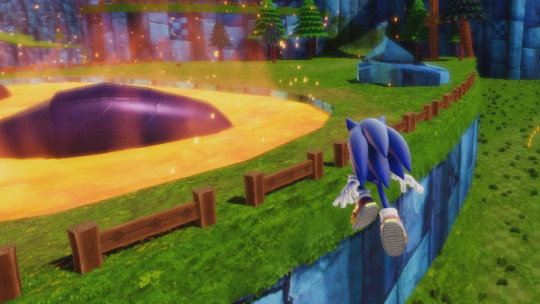
Sonic GT has always been kind of a difficult game to control, but usually it just took a little bit of getting used to. There was always a period of adjustment, where you had to learn the game’s quirks. But, over time, I feel like the game is also just getting… quirkier. Every time I come back to this, I slam head first into the Sonic GT’s learning curve, and it always feels just a little bit steeper. This is one of those games that tries to fit a lot of abilities into a tiny amount of buttons. It works, but it feels like you have to memorize an operator’s manual. It’s all about figuring out which button to hold when to get what state. But, man… when it clicks into place, it’s still kind of magic. And, at the very least, the levels have all been reworked to take better advantage of Sonic’s high-flying, death-defying acrobatics. You’ve just got to be willing to learn. The real downside of this new version is the inclusion of a proper story mode -- I don’t have anything against having cutscenes in your game or whatever, but for the purposes of reviewing these games, some ability to fast forward through the talking heads so I could get back to the gameplay would’ve been nice. You can skip ahead in cutscenes you’ve already watched, but that doesn’t help when it’s your first time through. Oh well. So it goes. (Update: in the process of getting this article posted, Sonic GT has been patched to make cutscenes always skippable.)
Project SXU (Sonic X-treme Unity)
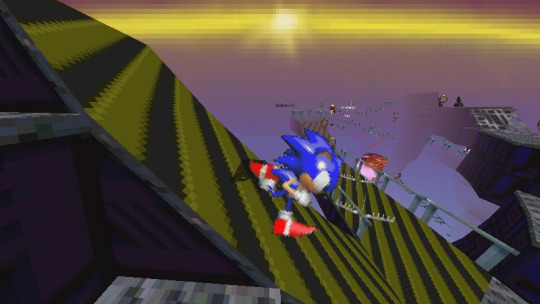
Another year, another Sonic X-treme recreation. This one’s interesting because it seems to be the most “complete” yet, offering the four most famous levels: Jade Gully, Crystal Frost, Red Sands and Death Egg. Intentionally or unintentionally, this also seems to replicate quite a few quirks we’ve seen in Sonic X-treme’s controls in the videos that have been released of the in-development build. Which means that it, uh, kind of sucks to play. I realize that’s kind of rude, but I’m sort of allowed to say that. 15 years ago, I was basically the only person on the internet that cared what happened to Sonic X-treme, so... I started contacting developers, starting with the game's producer, Mike Wallis. He lead us to Chris Senn, and that broke the dam on information about this game. Now, I don’t claim ownership over everything that came out of this, I’m simply saying I was the one who got the ball rolling. I watched the mystery of Sonic X-treme slowly get uncovered with as much intent as one could possibly have. It is a fascinating piece of lost media, but as a game… well, I think it got canceled for a reason. SXU shows us a clear vision of that, with a game that’s disorienting to look at and hard to control. Heck, if you’re using a controller, you can’t even use the analog stick -- you have to use a d-pad, leading to controls that feel frustratingly twitchy. But that's true to the experience. I probably spent almost as long in this demo accidentally slipping into bottomless pits as I did exploring its levels. Again, this more or less feels accurate to what we’ve seen in videos, though I do think Sonic probably feels a little too sensitive, here. Regardless, it’s still absolutely fascinating.
“Sonic Infinity Engine” Games
I’m cheating a little bit, here. This is technically three entries, but it’s in “Usual Suspects” because there’s been Infinity Engine games at SAGE for a few years now. Listen, it’s my site, my rules, and we’re playing fast and loose, baby!
Adventure Pack 2
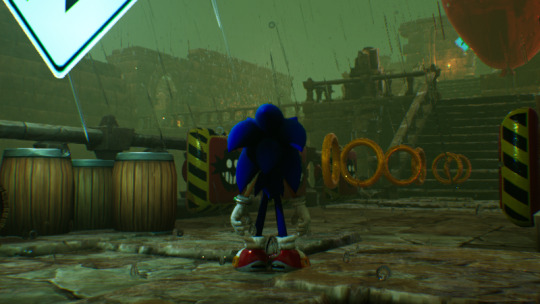
This claims to be a “pack” of multiple levels, but the one level I played went on for over 25 minutes without showing any signs of ending. The level is… well, it’s the kind of stuff we’ve seen at SAGE for years and years and years, a space previously occupied by SonicGDK and BlitzSonic before it, where somebody is clearly starting out learning 3D level design, has some prefab assets, and goes to town creating a huge, intricate environment… that doesn’t fit a Sonic game at all. Too many tight spaces, too much enemy spam, and too much labyrinthine pacing. This is “Sonic Visits Anor Londo,” and while it looks interesting visually, it’s easy to get lost, or worse, killed because something isn’t functioning right. Like a lot of Infinity Engine stuff, it’s a bit hit or miss.... And now, also cramped.
Infinity+ Colorful Combat
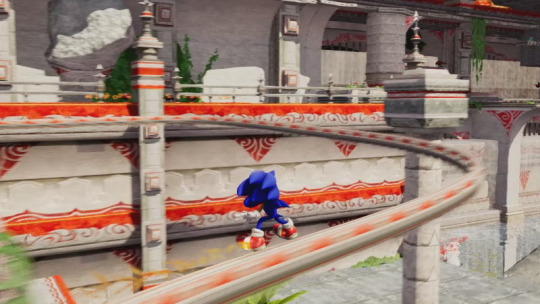
The primary goal of this seems to be to update the Infinity Engine with extra features, something that I think is pretty welcome. The Infinity Engine is okay, but it’s missing a little bit of polish that the original developer neglected to give it before abandoning the project. This helps tighten some of that stuff up, while also introducing Wisp powers and more playable characters. Some of the new characters could still use some work, yet, but given the project is still in active development, that’s pretty much a guarantee. This could end up being the defacto version of the Sonic Infinity Engine.
Sonic Reforge: Red Ridge (Blockout)
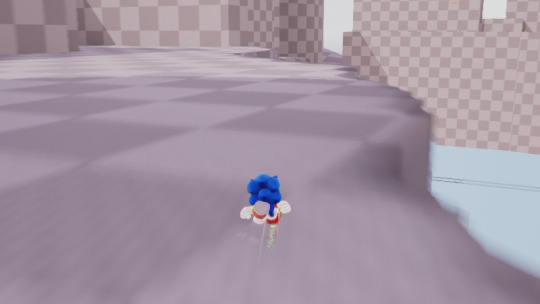
This is what’s called a “Grey Box.” Rather than build out a fully-detailed level, you get a rough estimate on how the stage will flow before you put all the graphics in. What’s here is okay, I guess, but the level loops back on itself in ways that can be kind of confusing. There are a few places where it’s not really clear where you’re supposed to go next, and I spent several minutes running in circles. I’m also not a huge fan of the changes to Infinity’s physics; jumping off of ramps is a key part of the Sonic experience, but there are several places here where that doesn’t work -- to get the height needed to progress, you just need to roll really fast. It works, but it doesn’t feel like the Sonic I’m familiar with.
Sonic World DX

I have a bit of history with this game. Or, well, with a different version of this game. I wasn’t kind to some of the original entries at SAGE many years ago, but over time, they’ve cleaned the game up and streamlined it a fair amount. Now we have the “DX” release, a further cleanup effort splintered off from the main project, but to be honest, I’m not entirely sure what’s different from the previous release. The main version of Sonic World supports an absolutely gargantuan amount of content, with 50 playable characters and at least that many levels. It was big, and weird, and impressive. This demo ships with three or four playable characters and eight stages. Beyond that, there’s not much else to say -- it’s still Sonic World, though this release doesn’t work right with my controller. It picks up the controller binds from the main version of Sonic World, correctly assuming I’m using a DualShock 4, but none of the buttons are correct. When it asks me to press the X button, I have to press Circle for it to properly register. Not only that, but the right stick camera control is completely broken. Switching to an Xbox controller fixes the camera issues, but now the face buttons have the opposite problem: when it asks me to press A to jump, I have to press X. Throws my whole vibe off, like wearing your shoes on the wrong feet. The menus are bizarre, too -- while adjusting the volume, you can’t push left or right to adjust the levels, you have to use controller face buttons for some reason. This whole thing feels like I stepped back in time to 2013 in a bad way.
Sonic Freedom
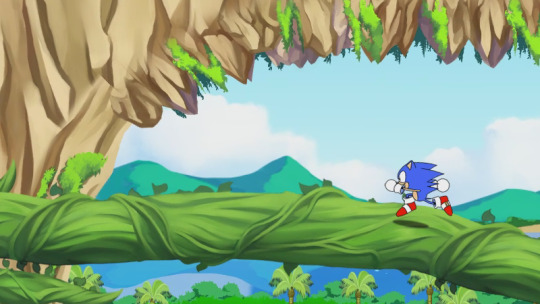
I feel like I’ve been waiting to see a major development from Sonic Freedom for half a decade at this point. The art considerations for this game are no joke, and I do not envy anyone trying to make a proper high-def 2D Sonic game that looks this good. But, well… it’s another year, and there’s not a lot here. It plays fine, I guess -- the controls are decent, at least. The problem is the level design. Does this level even end? I’m not sure. I know previous demos for Sonic Freedom have had more than one level, but the stage you start out in here is a confusing, empty labyrinth with respawning enemies and a finite number of rings. You climb up and up and up, but eventually I reached what felt like a dead end. Visually it will always look incredible, but I’m wondering if it’ll ever actually become a game at any point in the future.
BraSonic 20XX
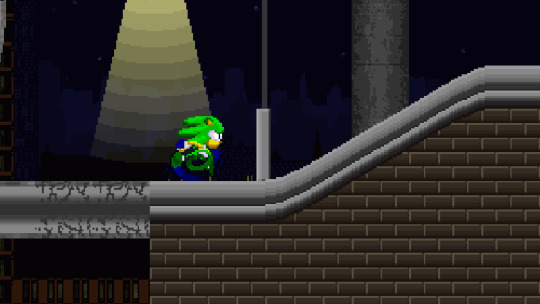
Here’s a strange blast from the past I wasn’t expecting. BraSonic is an old fangame from probably more than a decade and a half ago. It was so long ago that I can’t even actually remember if I played the old version of the game or not, but I definitely remember the name. What really throws me for a loop playing the 20XX version now is how much it feels like a game from back in the early 2000’s. The artwork, the sound effects, the locations, all of it makes me feel like I’m 19 again. Thankfully, this doesn’t play like a fangame from 2004; physics seem pretty solid, level design flows pretty well, and it generally seems to be fun, weird, and most importantly, unique. There aren’t many fan games here at SAGE that open with their first boss fight being against Sonic the Hedgehog. If you find yourself getting burnt out from so many Sonic fan games feeling same-y, this could be a good change of pace.
Sonic Frenzy Adventure
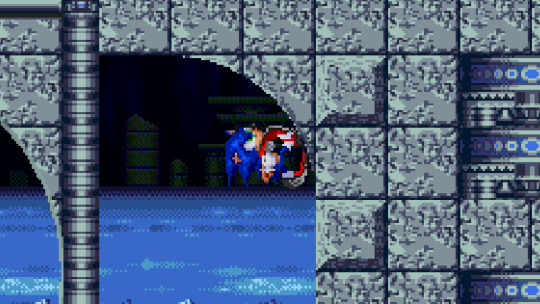
Maybe it’s the fact that this is the 20th Anniversary of the Sonic Amateur Games Expo, but here’s another very old fangame coming back out of the woodwork for an enhanced modern re-release. This game was a mainstay of the mid-to-late 2000’s SAGE events, after which it disappeared before being finished. Well, maybe it was finished. Again, a lot of this stuff was so, so, so long ago that this poor old man’s memory just can’t recall it. Seeing Frenzy Adventure back warms my heart, though. It’s an old friend in what has proven to be a very challenging year. Admittedly, parts of it still feel a bit mid-2000’s, but I consider those charming quirks. Throwbacks to a simpler era. At the very least, controls have been improved, so it does play better than the old releases did. Good stuff. Glad to see you again, dude.
Sonic Speed Course
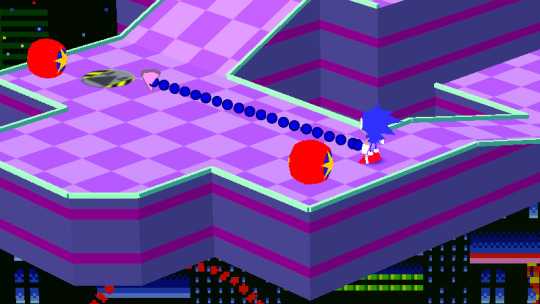
This was a game that turned up last year, but in the kerfuffle I didn’t get around to trying it, even though I really wanted to. This is clearly a game inspired by Kirby’s Dream Course, but instead of Nintendo’s pink puffball, we have Sonic and friends. Whereas Kirby gained abilities by bowling through enemies, this adapts a more traditional Sonic gameplay structure of item boxes filled with shields and other powerups. But here’s my deep dark secret: even though I love Kirby’s Dream Course in concept, there’s a part of me that feels an intense hatred for that game. I have distinct memories of renting Kirby’s Dream Course as a kid and getting really far into the game, but trying to play it as an adult I’m baffled at how difficult it is. The main problem I have is that every stroke you take subtracts from your health, meaning you can only hit the ball so many times before you just… die. This makes for a very, very steep learning curve that discourages play and experimentation. Every shot truly, deeply matters and eventually I find myself caught in a death spiral and staring at the game over screen. All of this is replicated in Sonic’s Speed Course, which, much like with Kirby, I find myself drawn to like a moth to the flame -- only to come away feeling dejected and like I’m just not good enough. For fans of Kirby’s Dream Course, this is undoubtedly good news, as this means Sonic Speed Course is faithful to the tone of that game. But I find myself wishing there was a practice mode or something that let me play these courses without the punitive health system, because I’m ready to love them.
Sonic: Triple Trouble 16-Bit
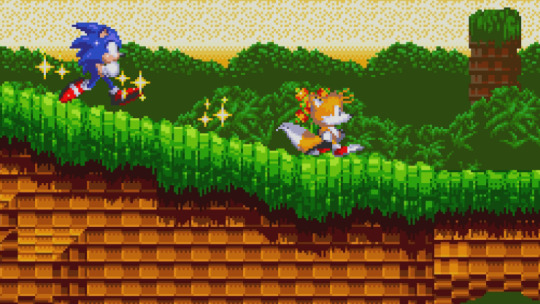
When you write about so many games at SAGE every year, things start to blur together... a lot. I seem to recall that Triple Trouble 16-Bit last year was good, but had room for improvement. Well, this year, this demo feels… really quite good. I’ll admit, I was a little skeptical about remaking this game. Sonic: Triple Trouble was among the first batch of Game Gear games I ever owned as a kid, and while I liked the game, in my adulthood, I feel like I’ve come to appreciate Sonic Chaos more. But so much has been added to this game that it’s really come into its own. It uses Triple Trouble more as a jumping off point to become something fresh and interesting, and on top of that, this demo is pretty polished. This game was kind of always on my radar, but it’s really turning into something special.
Battle Cross Fever
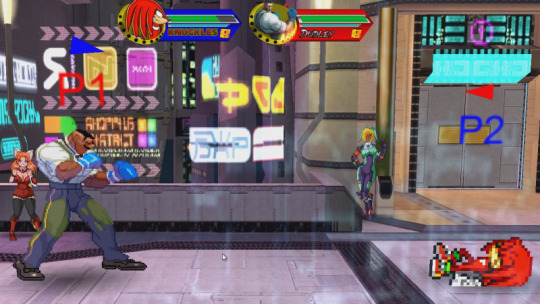
Every year, I download this game hoping for some kind of single player offering, and every year I’m let down. Battle Cross Fever is a fighting game that plays a lot like Smash Bros., but contains elements that pull it closer to traditional fighting games like Street Fighter. It’s the kind of game that can check with the server to make sure you’re playing the latest version, but doesn’t have true online multiplayer -- instead advertising that you should use a piece of screen sharing software like Parsec to accomplish online multiplayer. In their defense, the few times I’ve used Parsec, it’s basically been magic for how well it works. But I just want, like… anything that I can play by myself. Even if it’s just a super basic arcade mode with brain dead AI, anything is better than nothing. But, I suppose, I am an outlier. Judging by the horrific character select music I landed on, Battle Cross Fever has enough of a community that they could get fans to sing along to “Ghost Town” from Sonic Forces -- which is a fun idea, don’t get me wrong, but when you have loud voices over cheap microphones, well… I hope you aren’t wearing headphones like I was. Anyway, this game’s always seemed solid, but I’ve also never played it with another human being, so really, I’m speaking from the perspective of admiring the diverse roster and all of the fun arenas they’ve ported in. Maybe someday it’ll get some single player content.
I’ll be back with another article… uh, eventually. In truth, I was only going to feature five games here, but it ended up being ten, so we’ll see how many are in future articles when we get there!
#writing#SAGE#sonic amateur games expo#review slew#sonic gt#project sxu#sonic infinity engine#sonic world#sonic freedom#brasonic#sonic frenzy adventure#sonic speed course#sonic triple trouble#battle cross fever#review
8 notes
·
View notes
Text
Vampire Hunter D’s Lone Video Game Adaptation

When people talk about PlayStation era 3D games being hard to go back to, Vampire Hunter D is the one I most often think about. Something of an alternate timeline version of the Vampire Hunter D: Bloodlust animated film, the game has you play as the vampire hunter, himself. Throughout the adventure, you explore the castle Chaythe to rescue a woman, Charlotte, from having been kidnapped by the vampire lord, Meier Link. I say it’s an alternate history because while the general plotting of the film (itself an adaptation of the third novel in Hideyuki Kikuchi’s series), the events of the game take place entirely within Chaythe, whereas only the last act of the film is set there.
The decision to condense the story to all take place within the castle is a brilliant move and makes for an interesting and thematically consistent setting. You work your way from room to room, finding items and solving puzzles to open up more of the castle to explore. All the while you must slay or evade enemies that stand in your path and battle the occasional boss. If any of this sounds familiar, it should. It’s the formula for the classic survival series, Resident Evil.
Vampire Hunter D does its best to disguise itself as a survival horror game. It has pretty much all the staples. There’s the spooky mansion setting, the keys and puzzles, the backtracking through areas to open previously inaccessible locations. There are pre-rendered backgrounds and static camera angles. Last and for many, definitely least, there are tank controls.
My feeling is that tank controls are perfectly fine for survival horror games where the player has no control over the camera. It makes sense that your directional movement would be absolute rather than depend upon the view of whatever area you happen to be in. The drawback, of course, is that precision movement is difficult and you often move a bit slower because it takes time for your character to turn to face whatever direction you want to go.
Vampire Hunter D is not a survival horror game. It’s an action adventure game. It’s an action adventure game with platforming, fast paced melee combat, and plenty of ways to keep yourself fighting fit in the form of consumable items. None of these things are made easier by way of tank controls and they are, by far, the biggest barrier to entry for players who might have otherwise really taken to the game. All it takes is getting stuck against a wall while being wailed on by an enemy or missing a jump due to a poor camera angle to sour the overall experience.
The game seems to be aware of just how inappropriate tank controls were as well, as other aspects of the game seem to exist purely to compensate for the movement. The platforming I mentioned earlier rarely has you leaping over dangerous gaps. Even the instances that do only set you back a few seconds or reset the current room with no penalty to your health points. Really, most of the time you just need to hop onto a box or a knee high ledge, which kind of makes you wonder why they bothered including it.
Tank controls really have their limitations in the combat. To compensate, by default, you lock onto the nearest enemy when you draw your sword. This alters your movement a bit as pressing left or right will have you circle around your target in that direction rather than having you turn your body to face that direction. This works fairly well in rooms that provide good visibility and aren’t too cramped, but can be pretty useless in tight hallways or if you're trying to work around more than one enemy at a time. Again, the developers at Victor Entertainment Software seem to have been aware of these limitations and generally limit the places where you face multiple enemies to specific sections of the game, many of which you can just run past if you need to. It’s no surprise that the bosses are all fought in more open rooms where you have ample room to run around, side step, and circle around while locked on.
It’s a shame that tank controls were what we were given. I understand why it was designed the way it was, but if any game could have been improved by having more standard 3D movement enabled, it would be this one. Perhaps most amusing is that there is analog support, but like Resident Evil, all it really does is map the tank controls to the analog stick rather than give you true freedom of movement we’ve become accustomed to over time. I have plenty of complaints about the movement in Devil May Cry, but something like that would have been a huge improvement over what ended up in the game.
While the movement controls may be frustrating during combat, the mechanics around combat are actually where Vampire Hunter D shines the most and why I think it’s a game worth exploring despite its shortcomings. Being half vampire, D’s prowess depends upon having a steady supply of blood. That vampire power is represented by the VP bar under your HP.. Overtime, your VP depletes and causes your attack power to drop and your magical abilities to weaken. You can recover VP in two ways: consume blood capsules that you find throughout the castle or be splashed with the blood of enemies you strike with your sword.
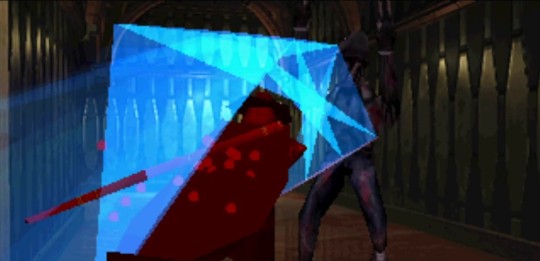
I love this idea because it provides incentive to engage in combat when you would otherwise be tempted to just run past as many enemies as possible. If you avoid fighting, you have to consume blood capsules. While they aren’t exactly in short supply on the normal difficulty, they are best served for boss fights or other tough enemies so that you can recover some health and your VP and deal as much damage as possible.
It’s not as balanced as it really should be, unfortunately. Your VP drains at a pretty slow rate, but it’s also hard to get back up to a high level through the blood splashes alone. It would have been interesting to have the meter drain more quickly, but also refill more quickly, adding a bit of urgency to the game and really encouraging you to take down any monsters you come across.
A similar mechanic is used for D’s magic abilities, which are made possible thanks to the parasite that lives within his left hand. There is an option to heal, an attack based magic that surrounds enemies and drains them of health, and the ability to absorb the souls of enemies. That soul absorption replenishes your magic meter, so while you want to refill your VP with sword strikes, you also want to make sure you inhale as many enemies into Left Hand as possible as well.
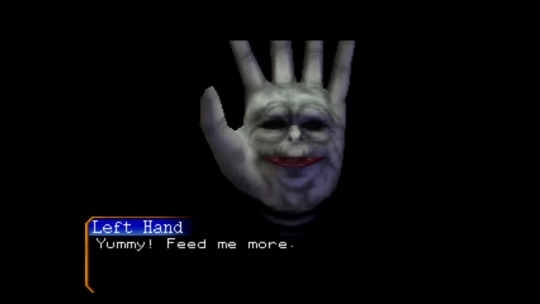
Again, this is a mechanic designed specifically to encourage killing the monsters in the castle and it’s a perfectly reasonable goal for an action game. Unfortunately, it has a bit of an opposite effect as absorbing enemies is not a guarantee and you’re likely to take damage when attempting it since you need to be in close proximity for it to work. If you try it and you can’t absorb one, you’ll almost certainly take a hit that would have otherwise been avoidable. It’s a shame the VP and magic replenishing systems weren’t all that complementary as the intent behind them really has a lot of merit and offers a glimpse at what could have been complex and satisfying combat mechanics.
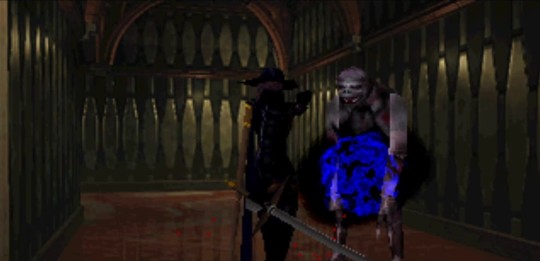
If you know what you’re doing, Vampire Hunter D is a fairly short game with a fair bit of replay value, as there are three endings you can achieve depending on a handful of choices you can make. I find the story to be one of the more compelling things about the game. It’s told through standard in-engine cutscenes and they’re acted fairly well (several of the actors from Bloodlust reprise their roles). Your enjoyment of that probably largely depends on whether or not you’re already a fan of the Vampire Hunter D source material or your feelings on sci-fi action horror in general, but there’s a lot to like about it.
I feel a bit bad for those who just aren’t able to enjoy older games due to feeling archaic. I can’t really defend the issues Vampire Hunter D has, as there are legitimate limitations and design choices that make the game frustrating at times. However, I also don’t want it to be dismissed as an old game not worth playing. You can tell just how much the people who made it really seemed to care about making it true to the Vampire Hunter D series. It’s about as faithful a video game adaptation as could be and one well worth spending some time with.
4 notes
·
View notes
Text
Off-the-Cuff First-impressions Review: Trials of Mana
I got Seiken Densetsu 3/Trials of Mana in the mail today and am surprised by just how excited I am about it. After the admittedly predictable letdowns of the Secret of Mana “remake” and the FFVIII “remaster,” not to mention the iOS revision of the former, you’d think I’d be jaded at this point.
But! FFVII remake is Actually Good, and so far it looks like Trials of Mana is, while certainly lower budget, also Actually Good. The voice acting is kinda meh, but not bad enough to detract from the game in my opinion, and considering they are working with SNES-era scripts (the dialogue is 99% word-for-word the same as the more recent translation of the original SD3 game, so it’s going to be a bit stilted anyway) it’s really not bad at all.
Besides, the actual meat of the game--the world, character and monster design, and the gameplay--is extremely solid and I have had very little trouble acclimating to it. It’s fun to play, it feels good to run around and explore the world and the battles are both very simplistic in a way that is familiar to an old fart like me and very satisfying in the way they function. One of the biggest weaknesses the original game had was absolutely horrendous input lag in some areas due to 1. the sheer size of the loaded map section, such as Rolante/Laurant, 2. The number of on-screen instructions the SNES had to process during battles, particularly during fights where you had massive sprites taking up the entire screen (the awful awful wall-guardian “Genova” [harhar] is probably the single hardest boss in the game purely due to input lag/drops; when you attack an enemy, even assuming your weapon swings when you tell it to, and that’s a big ‘if,’ the monster you are attacking is actually in a state which is several frames ahead of whatever state it visually appears to be in on-screen, making it extremely difficult to time your attacks properly to both defend and do optimal damage to what should have been a relatively minor “miniboss” fight). Trials of Mana, on the other hand, has none of those problems, simply thanks to more modern technology. So far every fight I’ve engaged in has been smooth and responsive as well as very visually appealing.
And wow is this game pretty. It’s not the most amazing example of the best graphical advances in gaming history, to be sure, but I genuinely don’t think that matters, as it’s still beautifully detailed and really does look like they took the original graphics and magicked them into more modern models. The re-imaginings of each area and monster are very faithful to both the aesthetic and the layout of the original design while at the same creatively expanding on them; I've had no trouble finding my way around familiar maps or identifying the bestiary, but I have found a lot of added depth to them, such as the ability to jump down on rooftops and find hidden nooks that were just static backdrops or otherwise out of sight in the original. The areas are more layered and interactive, but very importantly, nothing is missing. Not even the dogs and cats, who still bark and meow at you if you talk to them. I feel like I’m being allowed to see and explore the original maps from angles I didn’t have access to in the past. It really makes the 16-year-old in me unbelievably happy, to be able to finally, actually see and do these things I could only wish for back then. For people who have never played it, it’s probably a very pretty, if otherwise unremarkable experience, but for me it’s the granting of a wish I’ve had for a long time, but never expected to happen.
Similarly, I think a lot of people will look at the plot for this game and go, “...what?” Because it really doesn’t seem to have been changed at all from the SNES version, aside from a few little tweaks to the dialogue here and there to ease the transition between some sections or correct for differences in game mechanics (of which there are only a few; again, this is definitely a remake--it remains the same game with the same mechanics at its core). This can lead to some pretty awkward interactions between characters, and at times it seems pretty clear that the voice actors weren’t given a lot of direction about the context of their lines. It’s not a bad story, but it’s a very simply told one, and feels more like it’s targeting 12~16 year-olds (which it probably is, to be fair) who might not care so much about nitpicking the semantics of the plot and character motivations. Which is to say, most of the characters who are not main protagonists or villains are painfully cardboard-flat. They do what they do and say what they say because it advances the plot for them to do and say those things. Elliot falls for a “trick” that I’m pretty sure most 4-year-olds would see through. The Bad Guys are 1-dimensionally evil, wanting to either destroy or take over the world, with the possible exception of Lugar and Koren who have slightly more complicated “I’m your rival” reasons. That leaves the complexity up to the protagonists to shoulder, and while I haven’t played that far into the game yet, thus far is is beat-for-beat and shot-for-shot the same as the original, so I expect that character-building will be left largely up to the player to mentally write in, especially since the game features light/dark class-changes as a feature of its progression. (I do kiiiind of hope that your choice in class changes has a more material effect on the ending’s outcome, but I think that might be asking a bit too much from a remake of this sort.) But the somewhat archaic plot and character arcs are not surprising and for me don’t take away any of the game’s charm. Nikita is still the best, the shop owners still dance inexplicably, the fact you can play a werewolf is badass, rabites are still cute, Don Perignon is still kind of a jerk. I’m very nervous/excited to get Busukaboo and Flammie and hope they’ll be as much fun now as they were then. And the whole world is so damn pretty, I’m just glad to be there.
I’d be remiss if I didn’t mention the music. I’m not sure how much of a hand Hiroki Kikuta actually had in this remake, but the synth-orchestral arrangements of his originals are excellent so far. They’re both accessible/adaptable to the game’s sudden scene transitions (”Nuclear Fusion” starts and ends just as cleanly) while being a richer version of the themes, keeping close to the original sound while making better use of all the instruments that the SNES just wasn’t capable of emulating well. It blends very well with the rest of the game and I hope that continues to be true.
I do have nitpicks; while I know it’s a popular mechanic, I don’t like the “shift-lock” sort of dash using the left analog stick as both directional and a button. I think the camera controls are solid, but I do wish there wan a toggle-option to have the camera just follow over your shoulder wherever you run until you either run into a battle or turn it off. The character models don’t seem especially affected by anything except the most intense/pervasive lighting and sometimes feel oddly out of place, like I’m watching one of those old movies where an animated character comes into the Real World. Some of the monster designs seem cute-ified more than I’d like. And I can’t help but think that if the game can be this nice as a third-tier title for SE, what could it have been if they’d but the resources behind it that they obviously did with FF7? I understand why they didn’t, but it’s hard not to wonder what it could have been if they had. Seiken Densetsu is one of the most fraught series in the history of home video games and the fact that it’s even still around is something of a miracle, in my opinion. After the last...four?...titles following Legend of Mana, and the disappointment that was SD2′s (second!) remake, I really didn’t go into Trials of Mana with high hopes. I have been really, honestly pleasantly surprised. Even if you’re a diehard old-schooler who really doesn’t like modern JRPGs, if you have any nostalgia left for this series, you should give this one a go. I think it translated really well to 3D models, and what little it loses in the switch, it makes up for in playability. It’s not hard to pick up, it’s easy on the eyes and ears, it’s less grind-y than the original, and it doesn’t try to be more than what it is. I’ll probably always prefer the original, of course; there are too many memories attached to it for me, too many things that were groundbreaking at the time that are now old news or completely obsolete nowadays, and the new game certainly doesn’t push any modern boundaries. But it’s worth checking out, and especially if you’ve spent 20 years feeling let down by the Mana series, this might actually be the game you were hoping for, albeit maybe a decade late.
#other games#seiken densetsu#seiken densetsu 3#sd3#trials of mana#sd3 remake#long post#i have not proof read this at all#wysiwyg#opinion
6 notes
·
View notes
Text
Note on Supergirl 4x02
This week, on the Metaphor For Xenophobia And Racism For White People:
- We return to the themes of episode 3x05, specifically how unfair it is when very, very powerful people have to face consequences for their actions.
- Seriously, it is so TOTALLY unfair how Olivia Marsdin has to resign just because she *checks notes* committed a massive criminal conspiracy to illegally win a presidential election.
- ON TOP OF THIS, it's also a mindshatteringly bad take on the Obama birther conspiracy. The birther story was not racist because it was "unfair" that people from Kenya couldn't be President. The birther story was racist because it assumed that President Obama's election HAD to be the result of a massive criminal conspiracy and not a genuine win MERELY BECAUSE HE WAS BLACK.
- Kara thinks Olivia can say something to get out of this; becasue Kara, being a seasoned journalist that now mentors other journalists, has no idea how laws work. Olivia schools her, which is noble; but it's still skating around the fact that she INTENTIONALLY BROKE THE LAW.
- All of that being said, I've always liked Ms. Carter's performance as Olivia. She's folksy, but tough. If she'd been an alien that had been born on Earth, I'd be fighting for her to stay as well.
- "Ugly is as ugly does; that makes you the ugly one!" This protest scene was written by fucking MILHOUSE.
- And then a fight break out. Because as we all know, security and crowd control are pretty lax on *checks notes* PENNYSYLVANIA AVENUE.
- The DEO interview process is clearly lacking something, because Agent White Dude has some serious prejudices that aren't suitable for the job; and the dude he's arguing with has Kara's level of understanding of the Constitution. Where's Pam when you need her?
- James - having spent the last two years publishing his onw love-letters to a local superhero, who is also himself - suddenly has a big stick up his arse about objectivity in news reporting.
- I maintain that the guy playing Otis is doing Ned Beatty but *serious*, and for that, he has my gratitude.
- I'm sorry? The DEO poisoned the atmosphere with lead? THE DEO? Not Lena Luthor, executing a plan from Lillian Luthor, using an original design by Lex Luthor; in the full knowledge it would likely murder her very recently betrothed and probably really upset her best friend? THAT'S WHAT WE'RE GOING WITH? (I realise this is just exposition, but it's pretty bad) At least Otis recognises the inherent viciousness of the plan, becuase no-one else has ever mentioned it.
- I would like to note that this is probably the most credit Winn has ever gotten from someone from his own time.
- Apparently, you can just... *buy* black-market Kryptonite? Arguably, the most powerful substances on Earth? The one that's so rare the show tied itself in knots justifying Lena's personally developed synthesis cache of it? ...kay.
- Lena's been working through meal-times. This is usually your five epsiode warning to evacuate the city.
- "Sales for the image inducers have been skyrocketing since the revelation that the President is an alien." This does not actually explain anything, because: a) it's not like Lena builds them herself; that'll be outsourced to China, at a location with safety netting around the roof to stop the workers killing themselves; and b) IT WAS YESTERDAY. WE KNOW WHAT YOU WERE DOING YESTERDAY. IT WAS THE PREVIOUS EPISODE.
- I get the sense that I'm going to spend time this season complaining about time-scales.
- At least they're keeping Lena's libetarianism consistent. Let's credit them with that. And of course, she's not immediately concerned with the potential collapse of democracy because MONEY.
- I will never cease to be confounded about the complete lack of coffee in the Catco building. I work for a relatively small company, and we have a Starbucks in our canteen.
- Weirder still is how increasingly hard it is to find. We've gone from Noonan's, to a little cart, and now to a *pizza place*. How hard is to find an *actual* coffee place?
- And now it's another Lena Sob Story; because this episode isn't just about the ideological battle between hope and fear, it's also a Lena vs. The World story - not so much an actual story, as a plot mechanism that will result in Lena stating where her character's at right now. It's completely incongruent with the rest of the episode, but never mind.
- Anyway, Mercy was like a big sister to her, but then Mercy and Lex broke up, and Lena never called her. Lena blames Lex for the break-up, but Mercy for the abandonment. So far, typical Lena. Oh, and they agree on some really fucked-up shit.
- "Why can't humans be as powerful as aliens?" Lena is, I'm guessing from this, planning to make metahumans on purpose. I'm certain Lena has read Mary Shelly; but, like many nerds, has completely missed the point.
- Why is Brainy on the L-Corp image inducer network? He built it himself, and did it two episodes before Lena even met him. Did he give her the design? Why is it networked anyway? Why is the hack affecting Brainy first? What is this plan?
- It doesn't fucking matter; this whole thing is so Brainy can be victim to a hate crime as part of the Metaphor For Xenophobia And Racism For White People, and then Nia can step in to help Solve Racism.
- I'm not going to claim to be an expert on women, but I'm pretty sure encouraging total strangers to investigate their personal information is... rare.
- "I'm putting a lockdown on the cloud so no-one can access the system through a computer." This is not how cloud computing works.
- It's at this point we stop the narrative so Nia can explain to one of the most powerful and influential black men that's ever lived that he does, in fact, have a lot of power and influence to make social change. She's Solving Racism!
- "You have another chance to fight for justice now," she says. Back when I was posting on the AV Club forums during season 2, the fact that James DIDN'T KNOW HE COULD DO THIS IN HIS JOB was one of the reasons we were so fucking tired of him already. He's not improved since then.
- We are back on the 'mirror' analogy that first appeared in 3x15, and it's actually quite good. I am, however, reminded of the image of Lena looking at herself in fractured glass at the start of 3x17. Lena's image of who she is has been broken, and cannot simply be repaired.
- I digress. James is worried if he does an editorial, he will seem biased. *sigh* Okay, this is gonna get ranty. Deep breaths, everyone...
- YOU ARE JIMMY OLSEN, SUPERMAN'S PAL. AN ALIEN SAVED YOUR LIFE. AN ALIEN MADE YOUR ENTIRE CAREER. AN ALIEN GAVE YOU A SIGNAL WATCH SO HE COULD SAVE YOUR LIFE SEVERAL MORE TIMES. YOU BECAME SUCH GOOD FRIENDS WITH AN ALIEN YOUR GIRLFRIEND JOKED HE WAS YOUR BOYFRIEND. YOU DEVOTED SO MUCH TIME TO ALIENS YOUR GIRLFRIEND BROKE UP WITH YOU. *TWICE*. MANY OF YOUR CURRENT FRIENDS ARE ALIENS. YOUR BEST HUMAN FRIEND - who is 'currently' busy cleaning up the mess made by one of your alien friends, helping another one of your alien friends - BRIEFLY FELL IN LOVE WITH AN ALIEN, WHO YOU HUNG OUT WITH. YOU GO TO AN ALIEN BAR SO MUCH YOU'VE FUCKING GENTRIFIED IT. THE SHIP HAS SAILED ON YOU BEING PRO-ALIEN, JIMMY. STOP BEING A MASSIVE WANKER.
- Apparently, the only way to access the Image Inducer network is through the L-Corp mainframe, which is: a) definitely not how cloud-computing works; and b) contradicted by the fact the image inducers are STILL WORKING.
- Mercy designed all of L-Corp's security. Even though they only moved to National City two years ago. Right.
- "This is more innovative and imaginative than even I expected." IT'S AN OFFICE BUILDING WITH BUILT-IN SKYPE. Real imagination would have been REPLACING THE FUCKING SECURITY SYSTEM.
- Why does EVERYTHING have to turn into the Glorification of Lena Luthor?
- Miss Teschmacher getting the doors to close through quick thinking has easily made her the most likeable character on the whole damn show.
- "Reporter's Honour." Okay, Kara; firstly, it's called 'off the record', and the fact that Lena doesn't really feel worried about getting that status from you is pretty much why being such close friends with her is *completely unprofessional*.
- Lena built the Lexosuit. Huh.
- ...
- What?
- She built a suit... described as an "exquisite intrument of death"... with the potential for fighting Superman... as a hobby project? Is that what happened? Or are we just going to gloss over it, like- oh, okay, we are doing that.
- "It's about doing good for the world and clearing the Luthor name." You can't clear the Luthor name, sweetie. They actually did those things. And as far as doing good for the world: that's not a plan; that a GOAL. You really need to give details. Maybe a real journalist can ask you sometime.
- "He told me they were cute and I should make them in pink." One line of dialogue, and the potentially interesting Lena/Lex dynamic has been reduced to the most boring thing imaginable. FFS.
- "I know I'm the best." Oligarch, *please*. I guess it helps that Winn's in another century.
- "You've chosen a side. I'd never do that." WHAT THE FUCK DOES THAT EVEN MEAN? Please, someone explain.
- No one tell Mercy about that time Lena purposefully overdosed her oldest friend with Kryptonite.
- "The Luthor name doesn't deserve Lena." Why the fuck not, Supergirl? Kryptonite, Lexosuit, thinks you're full of shit; what exactly is the big thing here that separates her from them?
- Also, have you just... *forgotten* about the Kryptonite thing, or...?
- The sheer petty-minded simplicity of the wood-chips in the cup is lending weight to my 'written by Milhouse' theory.
- Huzzah! James has decided to stop being a massive wanker for a bit!
- "It is our duty as journalists to expose the truth." For long-time readers of these posts, THIS SHOW IS TROLLING ME.
- Brainy and Alex get a nice scene as part of the Metaphor For Xenophobia And Racism For White People, but I'm just left wishing we could have had more scenes like this between her and Winn. Where was *nice* Big Sister Alex when he was here?
- Supergirl's speech is lovingly earnest, and *totally unengaged* with any actual issue beyond being nice to each other, and certainly not the one where Olivia INTENTIONALLY BROKE THE LAW. This was a total failure of our institutions, not least of which, THE PRESS, for not vetting her thoroughly enough. The potential for whataboutery is high.
- Okay, for some reason, I thought they'd cast Brent Spiner in this role, not Bruce Boxleitner. Anyway, this casting is a nice bit of nerd symmetry; and makes it almost certain that President Baker is going to be revealed as a wrong'un.
- I've not talked about J'onn much, mainly because he's spent most of the episode walking around aimlessly before he can show up at the Sons of Liberty meeting.
- Agent Liberty has been described in press releases as being almost supernaturally persuasive. The actual execution of this idea is... he's actually engaged with the issue. That's it. The government *was* taken over by aliens. National City *was* attacked by aliens. The press - and I know I did a big rant in favour of this above - *is* pro-alien; and these people know it, regardless of how unbiased James was hoping to appear. It's messy, and Supergirl talking about hope is not going to cut it. It's not going to get these people jobs. It's not going to stop their nightmares. I've seen people compare how he speaks with Trump. This - this scene, at least - is not Trump. Trump isn't engaged with the issues. Trump is the end result of forty years of this shit, long after the tribal boundaries have been set in place. It's never even really mattered what Trump says. They like Trump, because Trump is *their* guy. The definitions of 'Us' and 'Them' have been around since at least the 90s, if not earlier; and Trump just made himself more 'Us' than anyone else did. And Agent Liberty is not doing that. There's an attempt, but the mask keeps him separate from his audience. Mostly, he's just recirculating the fears that they already have - that they have a *right* to have - and then pushing them towards his terrible conclusions. This isn't magic. This is basic oratory. This is the big challenge our heroes face.
- Our heroes are *so screwed*.
2 notes
·
View notes
Text
My 8bitdo Pro 2 Review - Part 9.5 (Recorded Video) [May 26, 2022]
Hello! Here’s Part 9.5 of my new 8bitdo gamepad, the Pro 2 Bluetooth Gamepad/Controller! 🎮😁
Sorry for the long delay. I've been absent since April due to my PC problem, but now I'm back in the saddle. 🙂🖥️ Except for one, however, the concern of my hard disk drive. 😔 *sigh* Anyways...
For this half part, I'm now attempting to do a test. Well, a quick test if these back paddle buttons work on my Pro 2 gamepad after mapping from the Ultimate Software.🙂🎮🖥️
If didn't see my Part 9, then please [CLICK ME!].
So without further ado, let's get started:
BTW: Watch my record video first.🎦📲
My Experience:
• Alright, so here's the trusted Gamepad-Tester website w/ my 8Bitdo Pro 2 gamepad. Also, the website itself has noticeable change since (well, a bit). It can now support four controllers, and the Xbox controller line art is outlined black, only for buttons and analog sticks.
• Nonetheless, to start my first button test, I press the profile switch button & the tiny light shows that I have an existing mapped profile from the Ultimate Software. And, look at that, my back paddle buttons work! With that, I don't need to press buttons from analog sticks while driving or walking as a character in any game. But, will it actually work in (any) games? let's find out.
• Well, apparently, GTA V online 🏙️🚘 is the only game I could test on than anything else.😅 I probably should add more games in the future, maybe some more miniature memory-size games should do, and thankfully I have a ton of them.😊🎮 As for the functional back paddle buttons, they work well much like other buttons from my Pro 2 gamepad.👌 As I'm driving in GTA V Online, the P2 button is my Left Stick button for horn sound. Surprisingly, I could press & hold the P2 horn sound while I'm driving, which is pretty annoying yet pretty cool at the same time 😅📯🚘. But, when I step in selected weaponized ground vehicles I could deploy proximity mines with the same button (or any similar/related mines). While the P1 button is my Right Stick button for looking behind, quite very handy though. And when I'm in stand mode with my character, I could press both P1 & P2 buttons for some cool taunt action. 😁👍 The best part, is when I turn on my controller my profile still loads indicating that the light is on & I could turn off the profile easily, nice!
• But, don't worry about game emulators (a.k.a. my all-in-one game emulator called "Retroarch") because I'll be planning to test it out in the next part.🙂
BTW: I almost forgot! An update firmware v1.08 for my Pro 2 gamepad has already been released & tweaked numerous problems such as optimizing the analog sticks & wired USB connection for X-Input mode, and finally the rapid blink light for turbo function. I've already updated & it works just fine. *sigh* Rejoiced! 😁🎮
Overall:
• The unique feature of the profile switch & the additional back paddle buttons are something that we need during our playtime on any game genre(s). And my Pro 2 gamepad from 8Bitdo is no exception. I'm having a great time for the past months playing PC games with this gorgeous retro-inspired gamepad. So, I have more things to come until I'm done with this topic. 🎮🙂
Well, that’s all for now. If you haven’t seen my previous parts of the same item, as well as my previous 8bitdo review items, then I’ll provide some links down below.↓😉
My 8bitdo USB Wireless Adapter ‘PS Classic Edition’:
• Opening parcel [Aug 27, 2020]
• Part 1 [Aug 28, 2020]
• Part 2 [Aug 28, 2020]
• Part 3 (Recorded video) [Aug 28, 2020]
• Part 4 (Recorded Video) [Aug 28, 2020]
• Part 5 (Recorded Video) [Aug 28, 2020]
• Part 6 (Recorded Video) [Oct 20, 2020]
• Part 7 (Recorded Video) [Oct 28, 2020]
• Part 8 (Recorded Video) [Nov 14, 2020]
• Part 9 (Recorded Video) [Nov 14, 2020]
• Part 10 [Final] (Recorded Video) [Nov 16, 2020]
• Extra Part / Final Plus [Nov 25, 2020]
My 8bitdo SN30 Pro+ gamepad:
• Unopened parcel [Nov 3, 2020]
• Opening parcel (Recorded Video) [Nov 3, 2020]
• Part 1 [Nov 19, 2020]
• Part 1.5 [Nov 19, 2020]
• Part 2 [Nov 27, 2020]
• Part 2.5 [Nov 27, 2020]
• Part 3 [Dec 1, 2020]
• Part 4 [Dec 3, 2020]
• Part 5 [Dec 8,2020]
• Part 6 [Dec 11,2020]
• Part 7 [Dec 20, 2020]
• Part 8 [Jan 19, 2021]
• Part 9 [Mar 27, 2021]
• Part 10 [Mar 27, 2021]
• Part 10.5 [Mar 27, 2021]
• Part 11 (w/ 8bitdo’s Ultimate Software ver. 2.0) [May 11, 2021]
• Part 12 [Jun 3, 2021]
• Part 12.5 [Jun 3, 2021]
• Part 13 [Jul 31, 2021]
• Part 14 [Aug 17, 2021]
• Part 15 (Macros mapping - 1st attempt) [Oct 9, 2021]
• Part 16 (Macros mapping - 2nd attempt) [Oct 9, 2021]
• Part 17 (Serious problem after testing) [Oct 10, 2021]
• Part 18 (Equipped w/ Panasonic Eneloop AA Batteries) [Oct 18, 2021]
• Part 19 (Final) [Nov 9, 2021]
My 8bitdo SN30 Pro 2 gamepad:
• Unopening parcel [Oct 28, 2021]
• Opening parcel (Recorded Video) [Oct 29, 2021]
• Part 1 [Dec 2, 2021]
• Part 2 (Recorded Video) [Dec 4, 2021]
• Part 3 [Feb 21, 2022]
• Part 4 [Feb 26, 2022]
• Part 5 [Mar 4, 2022]
• Part 6 [Mar 6, 2022]
• Part 7 [Mar 22, 2022]
• Part 8 [Mar 22, 2022]
#My Record Video#MyVideo#My Video#Wireless Controller#8Bitdo#8Bitdo Pro 2#8Bitdo Pro 2 Controller#8Bitdo Pro 2 Gamepad#Controller#Gamepad#Test
1 note
·
View note
Text
Why the N64 Controller Design Was So Weird
https://ift.tt/eA8V8J
There’s a lot to be said about the 25-year history of the Nintendo 64, but one question that almost always seems to come up in any conversation about the console is “Why was the N64 controller so weird?”
Mind you, that isn’t to say that the N64 controller was necessarily bad. There are certainly some who will make that argument, but others consider it to be one of their favorite video game controllers ever. Whichever side you fall on, though, you’ll probably agree that the N64 controller was simply bizarre from a design perspective. There wasn’t really a controller like it before 1996, and there really hasn’t been a controller like it since.
The N64’s trident (or “Batarang,” as some call it) shape and somewhat strange A, B, and C button layout are certainly unusual, but when most people talk about the N64 controller being “weird,” they’re typically talking about the analog stick and Z-trigger placement. For a modern generation of gamers raised on the idea of being able to easily access a D-pad, analog sticks, and buttons at the same time (or, you know, anyone who grew up with the PS1 Dual Analog/DualShock controller instead), picking up an N64 controller for the first time must feel like a prank.
In fact, you could probably pull off a “Calvin’s dad” style joke and convince some very young gamers that the N64 controller looks the way it does because most people back then had three hands. It’s almost like Nintendo took two perfectly good controllers and decided to fuse them together as part of their attempt to form a kind of Megazord controller.
cnx.cmd.push(function() { cnx({ playerId: "106e33c0-3911-473c-b599-b1426db57530", }).render("0270c398a82f44f49c23c16122516796"); });
You know what’s really funny, though? That’s actually pretty much exactly what happened.
First off, you may have heard that the N64 controller was designed to play Super Mario 64. However, that’s not entirely true. Various Nintendo representatives over the years (including Shigeru Miyamoto) have stated that the design of the N64’s controller and Super Mario 64 essentially influenced each other rather than one solely informing the other. As Super Mario 64 programmer Giles Goddard once put it, “It wasn’t so much that controller dictated Mario 64, it was just that was the game [Miyamoto] was working on. Mario was the way of testing it out.”
That being said, the emergence of 3D gaming very much influenced the design of the Nintendo 64 controller and Nintendo’s decision to use an analog stick. While the N64 wasn’t the first video game controller to feature such a “joystick,” it was the first controller to emphasize the idea that joysticks were going to be the best way to move characters around a 3D space and afford players the range of motion that kind of environment requires.
So why didn’t Nintendo just put the joystick on the left side of the N64 controller (like we saw with the Dreamcast) or give players two joysticks to use in unison (like the PS1 Dual Analog controller eventually did)? Well, we don’t know if Nintendo even considered those specific designs at some point, but we do know that part of the reason they didn’t position the analog stick in a way that let you easily use it along with every other available button on the N64’s controller is that they felt that may softly force developers to use it.
See, Nintendo knew that 3D gaming was going to be a big deal, but reports suggest they ultimately felt that most upcoming games were either going to be 2D, 3D, or, in rarer cases, a combination of both concepts. As such, they wanted to make a controller that was essentially two controllers: one made more for 2D “16-bit” games and one for 3D “64-bit” games. It’s a little strange to think about, but this wonderful MS Paint demonstration from Reddit user rg44_at_the_office does an excellent job of illustrating the concept:
As you can see, the “blue” controller is a pretty standard design that Nintendo suspected you would use to play more 2D-like games. You held it like a “normal” controller and used the D-pad along with the face buttons and L and R shoulder buttons. Meanwhile, the “red” controller is the one Nintendo designed for 3D games. It’s essentially a sideways version of a more standard controller. This layout essentially replaces the D-pad with the analog stick and replaces the L shoulder button with the Z-trigger.
Interestingly, those aren’t the only controller layouts that developers eventually utilized. Some games allowed for a third configuration designed to allow you to use the D-pad and analog stick in conjunction (with the Z-trigger now replacing the R shoulder button rather than the L shoulder button). A few games (most notably Perfect Dark and GoldenEye 007) even let you use two N64 controllers in conjunction with each other for a strange take on the “dual analog” experience.
To be fair the idea of offering developers that kind of hardware flexibility at a time when the bridge between 2D and 3D gaming was still being built probably sounded like a good one. However, Nintendo’s good intentions were eventually undone by a few emerging practicalities.
First off, not many games exclusively used the “blue” controller layout. Kirby 64 is the most famous N64 game I can think of that relied exclusively on the D-pad for movement, and even then, developer HAL Laboratory initially intended to use the “red” layout for that game before they saw how awkward it was for children to hold the controller in that way. There also weren’t a lot of games that really offered you the option of using either the D-pad or the analog stick layout (or both in conjunction), and those that did usually struggled to make the whole thing work.
Most importantly, Nintendo’s design was based on the idea that gamers wouldn’t need to access all of the N64’s buttons at once. However, it soon became clear that 3D games were evolving to require (or heavily benefit from) the use of as many input options as possible. While quite a few N64 developers obviously figured out how to work around the N64 controller’s design, you only have to imagine trying to play something like Ape Escape or even a “next-gen” game like Halo on an N64 controller to appreciate how limited the N64’s controller design ultimately was.
In short, the N64 controller was so weird because Nintendo tried to use it to satisfy two wildly different styles/eras of game design equally. While you could argue that they underestimated how quickly things were evolving and may have been better off going with the dual analog set-up, it has to be said that it’s hard to play a game designed specifically for the N64 controller on any other peripheral and have it feel anywhere close to the “intended” experience.
The post Why the N64 Controller Design Was So Weird appeared first on Den of Geek.
from Den of Geek https://ift.tt/3ql2ECc
0 notes
Text
Secret Base reviews: AND1 Streetball: The Video Game
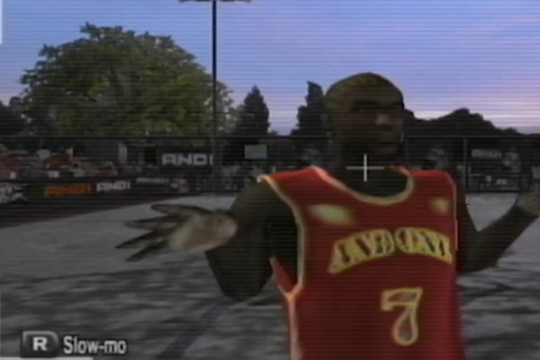
It got mediocre reviews when it launched in 2006. They were wrong.
As a kid without cable, I missed out on a lot of great TV, including ESPN’s late-night show about AND1, the streetball pro circuit. My friends wouldn’t stop talking to me about it, and I couldn’t blame them. Electrifying moves and dazzling dunks? That sounded amazing, and not being able to watch made the show seem even more magical.
So when I saw the AND1 video game I knew I had to get it. I mowed two lawns to earn enough money to buy the game. As soon as I started playing I was hooked. It was the first time I had been exposed to the wonderful world of authentic streetball. I had played the NBA Street and NBA Ballers games before, but that was different. The NBA wasn’t involved in this game.
Why am I talking about the AND1 video game and not Street Hoops, the game that came out before it? Because I never played Street Hoops as a kid.
I recently looked up the official reviews of the AND1 video game, and they were ... unpleasant. IGN gave it a 4.1/10, saying “This is easily one of the weakest basketball games to have come out in a while, primarily thanks to its idiotic control scheme”. Gamespot gave it a 4.7, saying “You’ll probably get more entertainment value out of the latest And1 Mixtape DVD than you will out of the And1 Streetball game.”
I’m shocked that it was received with such negativity, because for me the game is a low key classic. So I’m going to explain why AND1 is one of my favorite sports games of all time and why the reviewers completely missed the point.
The intro was incredible
The intro video sets the perfect tone. This game wasn’t about out-scoring your opponent. Fuck that. AND1 was about finding out the coolest combination of moves you could pull off. How many ankles could you break? How many self-alley oops you can pull off until your friend gives up and asks to play something else?
Yes there was a scoreboard, but the real winner was the person that did the coolest shit. If you ever referenced the scoreboard, you are an undercover cop. Congrats!
The controls were set up for creativity
AND1 had a gameplay dilemma.
Streetballers have so many special and specific basketball moves. How were they going to fit all these dribble moves onto a controller? What AND1 did was add a shit-ton of dribbling animations and separated them into levels of moves. How you moved the left and right thumbsticks in combination with the right trigger would directly affect what move you did. Sure it was hard to follow what combination did what, but it gave you the opportunity to put your favorite ones to memory and develop your own personal arsenal of moves.
What makes this even more fascinating was basketball video games’ complicated relationship with the right analog stick at the time. It’s all figured out now, but back then that shit was a work in progress. In Street Hoops, the right thumbstick was for directional passing. In some NBA Live and March Madness games the right thumbstick was used for dribble moves. NBA Street Vol. 2 used it as some sort of off-ball player control mechanism. Basically, the buttons were the main focus and the right thumbstick was a “what other cool shit can we add?” control.
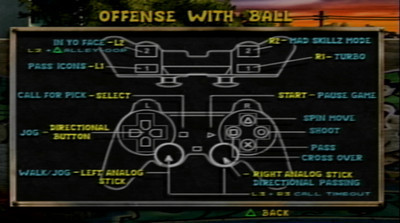
Street Hoops Control Scheme
AND1 had to choose between designating the streetball moves to the buttons or the thumbstick. They chose both. I’m going to try to explain the system the best way that I can.
Welcome to “I Ball” controls.
I Ball control is a three level tier system that separates each move by how difficult they are to pull off. A simple Level 1 move was considered a setup for the higher level moves but you could button mash (square or X) all day if you wanted to.
Level 2 moves were considered the showboat moves, which were controlled with the right + left analog stick and Level 3 moves were the anklebreakers (right + left analog stick + R1/R), which were the most difficult to pull off but it ended with an automatic anklebreaker. The tricky part about this is that you had to fill up the anklebreaker meter, which could only happen if the defender was close enough to you.
In addition to anklebreaker moves, you also had these things called ‘Breakdown Moves’ which on the surface, look like knockoff GameBreaker moves. You were only able to use these after you had successfully pulled off enough Level 1 and Level 2 moves. AND1 had a few basic Breakdown Moves templates, but you could also create your own custom moves by piling together two showboat moves, a finish and a celebration/taunt at the end.
This made pulling off your own creations even more satisfying. While ‘Breakdown Moves’ seem unstoppable at first, you were able to block them with the right timing and personnel.
What this gameplay gave us was the solid foundation for a streetball game that had more wrinkles than the game originally seems to have.
Let’s take a look at the main game mode, shall we?
Story Mode: Welcome to the AND1 Mixtape Tour

AND 1’s story mode isn’t complicated and actually sounds pretty realistic. You create a-baller and start from the bottom and work your way into the AND1 circuit. See the guy in the image at the top of this article? That’s my character K-Time, who goes by the name ‘Sir Dunks-A-Lot’.
As you complete different achievements and whatnot, you would be able to unlock signature moves, and clothing as well as improve your attributes. What’s dope is that the player you created would be available in other game modes. When you finish the story mode, you would end up with a fully-maxed out player. In theory, if you beat the story mode five times you had the opportunity of creating a full squad of 100 overall streetballers.
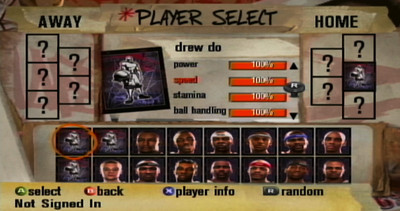
I only got to three before my disk froze, but I still think it’s possible. An underrated part about the tour mode is that the levels would come with cutscenes. They didn’t have to do this, but they did it for us.
The Mixtape Tour has two game types. There’s ‘Open run’ which is like the main story mode, but they also pepper us with some side games which includes some halfcourt basketball.

Beyond just trying to win, each level had side objectives within them that you would be asked to attain. Sometimes the game would ask you to block 2 shots, or win by 7. This way you had something else to aim for in a game where scoring and defense aren’t the most exciting elements in the game.
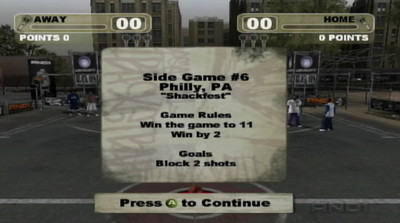
Hitting those goals would net you some in-game cash, and you can use your earnings to improve your player’s attributes to a point where they become an absolute god on the court. So yeah, you could just play to win and be boring or you could grind the game and become the greatest streetballer to ever do it. Your choice.
Bonus stuff
The bonus features in this game were so freaking sick to me growing up. They featured a behind the scenes look at the game and the league. You could go to specific streetballers and they’d have their own little mixtape of their best highlights.
Just another thing to show you that the moves in the game were real. THIS IS WHAT THEY DID MAN AND IT WAS LIT.
Other things I like
What makes this game stand out even more over time is the fact that this is the only AND1 video game we got. There weren’t any sequels to dilute the gameplay, storyline or brand. The game is what we got, and it’s honestly good enough to make me break out the old XBOX and run it back for this review. Every sport should have sandbox style options and this level of customization. Not just because it makes my job with Fumble Dimension easier, but because it makes us keep wanting to play the game years after we beat the story mode and unlock everything.
AND1 gave us a deep deck of dribble moves, the option to create your own streetballer, the abundance of court options and much more. For a 2006 sports game, this shit had a ton of replay value, which is the highest compliment I have for a sports game. Especially now when sports games think new content is just adjusting the ratings for a player ever-so-slightly and putting it in a random card pack.
Was this game perfect? Not even close. Defense was an absolute chore: all you could do was button mash the steal button and hope to not get your ankles broken. Since out of bounds and fouls didn’t exist sometimes you would find yourself shooting layups from behind the backboard due to some animation bug. Off ball movement wasn’t perfect and… you see how weird I sound critiquing a fun-as-hell streetball game? Of course the game wasn’t going to be perfect. Once you start taking it on its own terms, you start to appreciate how all out Black Ops Entertainment, Gameloft and Ubisoft went with this.
The game was flawed, but the flaws didn’t stop the game from being fun. And that’s what matters.
9
0 notes
Photo
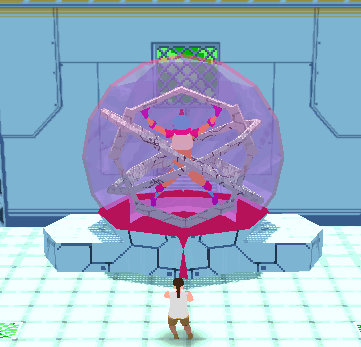
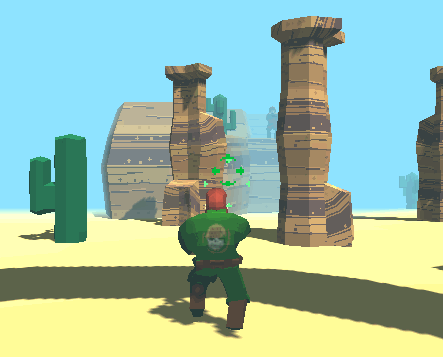
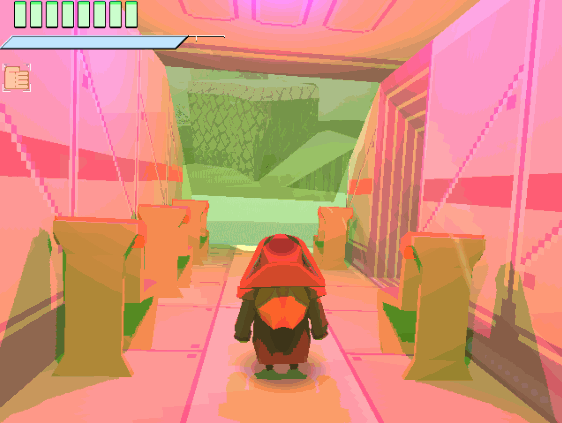
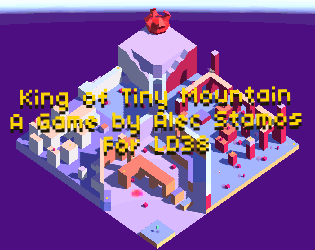
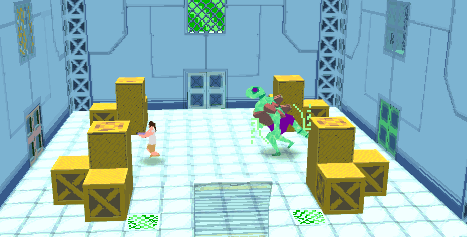
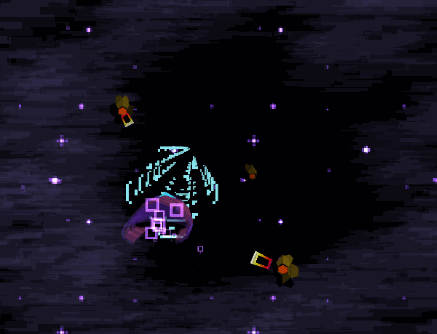

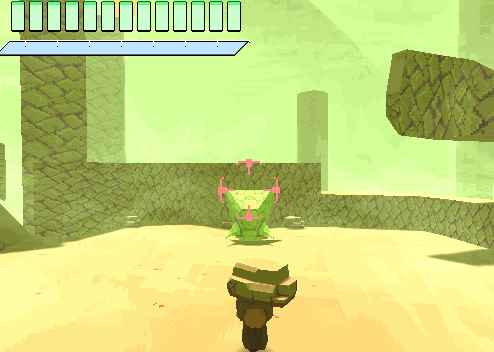
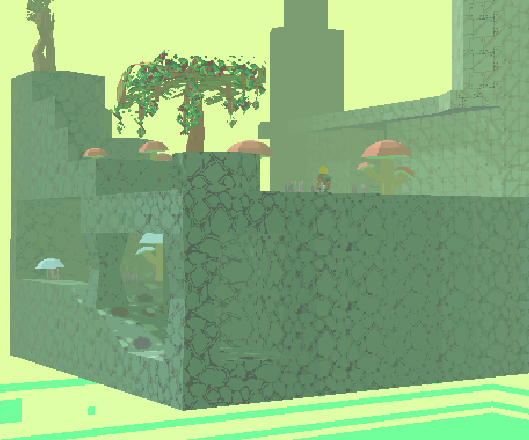
2017 - A Year in Review
Looking back on it, I’ve had quite a year. When putting together the gifs for this set, I thought I had gotten together a good collection, only to realize I had actually left out two whole games that I had released this year. So with that being said, let’s give the quick rundown before going into more detail:
Released Cold Vengeance
Released Flight of the Dada Thief
Released King of Tiny Mountain (For LD #36)
Released Famed Explorer of the Robot World
Demo for Reavers of New Rome
Demo for Kill the Superweapon
Trailer for Kill the Superweapon (plus Steam Page)
More details after the break:
And this is all during a year where, due to work and life stuff (most of which was good, fear not, just time consuming), there were a number of months where I got very little game work done.
First things first, at the start of the year I released Cold Vengeance, a project I’ve been working on since Mid-2015. It’s a game I’m still very proud of, but in many ways it was me working out how to make a game in 3D. It gave me a lot of practice for the games I made this year.
Which brings me to Famed Explorer of the Robot World, which was another 3D design learning experience, one that I had started last year, but over time had dropped as Cold Vengeance took up more of my time. I decided to finally finish it up and release it as freeware. Making levels in self-contained boxes is a really cool design exercise, and I highly recommend it.
Once Cold Vengeance was released, I wanted to start in to a new project to start off the year on the right foot. I’ve been itching to make 3D action-adventure game basically since before I even started making games, and I now had the tools, the code-base, and the experience to do so. An image had been floating around in my head of an ancient Rome inspired far-future planetary-romance adventure. Something nice and pulpy. I got to work. After a little over a month of development, I almost had a playable demo for Reavers of New Rome. But, due to aforementioned life stuff, it was another month before I finished and released the demo. While I ended up shifting to other projects during the year, I plan to return to Reavers of New Rome next year.
Last year I had resolved to do more rapid development. Although I didn’t get quite as much done in that regard as I had hoped, I did release two small, freeware games this year. One was a arcade rail-shooter called Flight of the Dada-Thief, and the other, which I made for Ludum Dare, is a single-screen, multi-area isometric 3D twin-stick shooter/platformer called King of Tiny Mountain.
King of Tiny mountain gave me a nice little trial run of twin-stick shooting in a 3D space. Once I had some time off I made a prototype for my next full project, Kill the Superweapon. This game let me play around with a lot of things I’m interested in: level design that fits on one screeen; taking control of the camera away from the player, thus freeing up the second analog stick for other things; boss enemies that can move around freely and pursue the character (which I’d played around with slightly in Ninja Outbreak, and one of the old Tales of the Renegade Sector episodes [eh... I’m not gonna give you a link for that one. If you really want to know, you can find it yourself], but never to this degree). I began that project in June, and am now close to finishing a beta version of it. I’m aiming to release it in March of next year.
And last, but certainly not least, I’ve been working on Space Captain McCallery Episode 1, the reboot of my Tales of the Renegade Sector series. I’ve been wanting to return to this setting, this story, and those characters since the last Renegade Sector episode back in 2013. Remaking/re-imagining a game I made all the way back in 2010 in 3D, and with all my design experience since then, has been quite an experience, and I’m looking forward to releasing the game early next year.
I tried running a Kickstarter, but it didn’t pan out. The trailer’s still good, though. Oh well, moving on.
After a few years of long projects, it’s been nice to return to the freedom of small-to-medium-sized projects. It’s a trend I hope to continue next year. Just like last year, I’ll probably make another post for looking forward into the next year, but I currently have three games in development which I expect will all see a release next year, so it feels like I’m already off to a pretty good start.
#Indie Games#Year In Review#Low Poly#LowPoly#Cold Vengeance#Kill the Superweapon#tales of the renegade sector#Space Captain McCallery#King of Tiny Mountain#Flight of the Dada Thief#animated gif#Reavers of New Rome#Game Development#Retrospective
7 notes
·
View notes
Photo

"THE FUTURE KICK YOUR ASS"
Christmas is finally here, and like many others, I’ve been busy celebrating the holidays with friends and folks I consider family, hence why this update is being filed later than usual I’m afraid.
Which means by the time most of you have read this, it’ll be too late to head on over to the latest King of Games’s holiday pop-up shop. Though considering how Hedgehog Books & Gallery is a bit out of reach for most folk, thankfully miki800 snapped took some pics…

The featured item this year was their new sweatshirt, inspired by the original Super Famicom packaging…


Though if given the chance, I probably would have picked up the pin set…

Actually, what I really wish I could get my hands on is this all-purpose King of Games shirt…
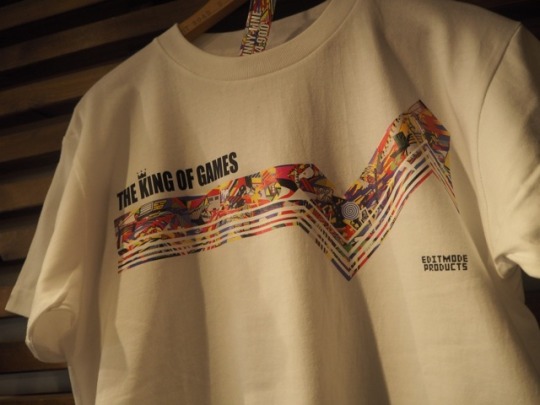
As well as a bag of their coffee (I’ve quite the java junkie)…

Right now, some folk are doing some last-minute holiday shopping, and miki800 is definitely the place to get idea, despite the fact that at this point, it’s more or less impossible to obtain the following attire.
Then again, the following Sega candy cab shirt is making its debut at Comiket at the end of the month, so you have just enough time before Christmas to book those flights and hotel rooms…

Hardcore Chocolate is doing shirts based on SNK! I picked up a few of their 80s American wrestling themed tees when I was in Japan ten years ago and have been dying to get something new from them. Like…




Now, given that it’s also winter, perhaps t-shirts might may cut it. So for those wanting something warmer, we’ve got a new batch of PaRappa sweatshirts and hoodies…

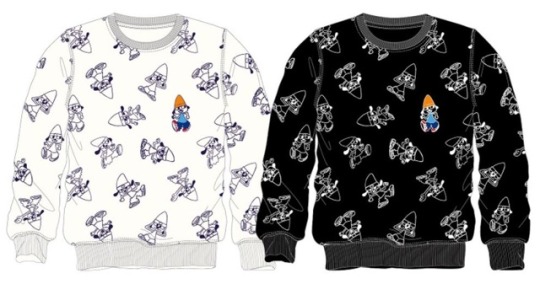


Sorry, but I’m so over gaudy Christmas sweaters. Though that being said, I really dig this one that’s Space Invaders themed. Maybe because it’s actually super stylish?

Yet what I really want is this Space Invaders jacket that was recently posted on Twitter…
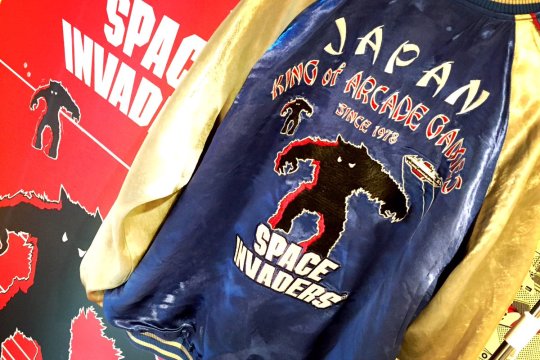
Though the next time I’m in Japan, which is hopefully soon, my priority is to track down this Gamest jacket (via peazy86)

Perhaps a full on track suit is something I should explore? This illustration certainly has given me some ideas (via thewonderjar)…

And speaking of illustrations of a woman from behind who clearly enjoys a good game, here’s a really nice piece from amidstsilence…
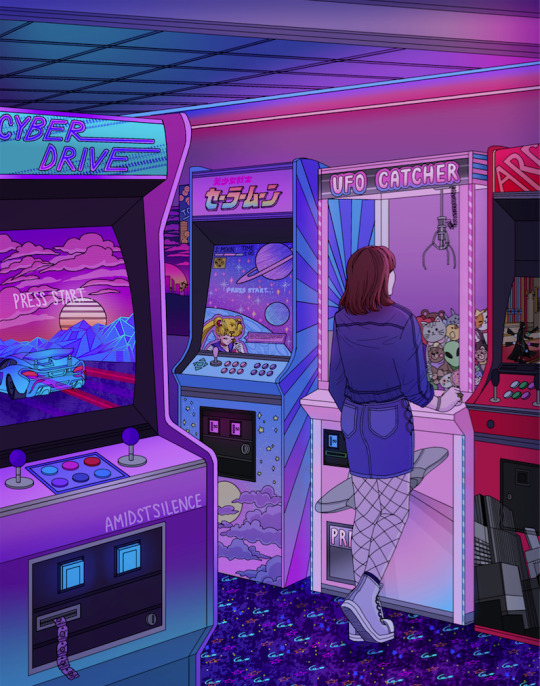
Back to belated holiday gift ideas, something that’s finally coming out is 8 BIT MUSIC POWER FINAL; it’s publication date is on the 25th and most importers are shipping it in early January…
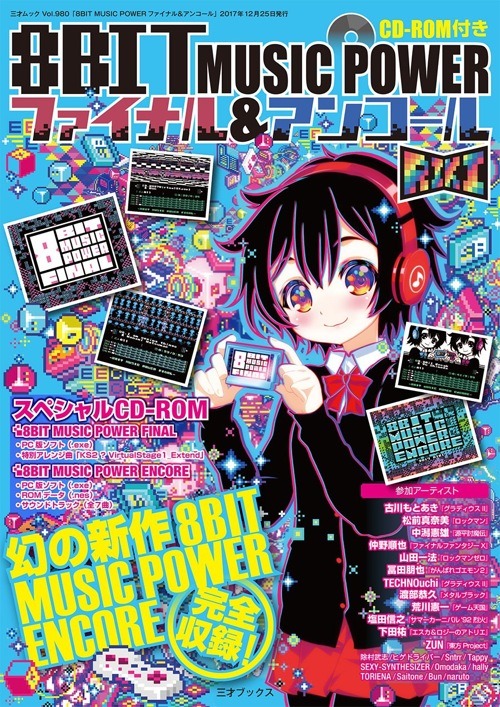
Speaking of music, remember that analog synth take on The Link To The Past’s soundtrack that I haven’t been too keen on? Well, for those did enjoy it, originalsoundversion reports that one can nab a physical version on cassette!

Though I can’t help mention the Luminist yet again, whose analog synth take on Super Metroid continues to progress quite nicely, but he doesn’t just do video game covers! The guy does original pieces as well, like…
youtube
Back to game music on tape, I wouldn’t mind finding out what else is on this (via charliecoffin)…


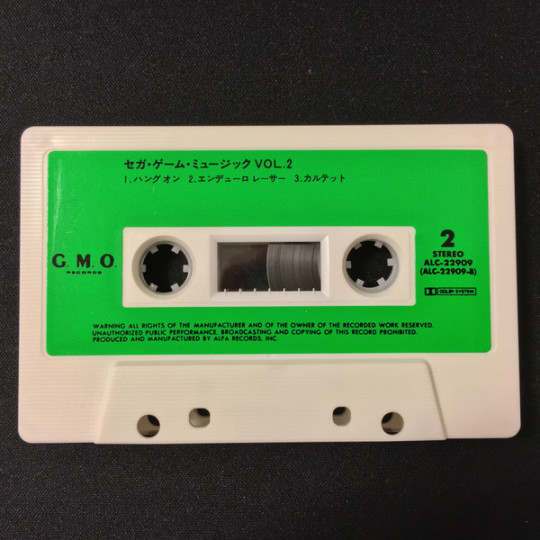
As you may have heard, there’s a brand new game cartridge being assembled for the Sega Genesis (provided it makes its Kickstarter goal and if everything else falls into place)…

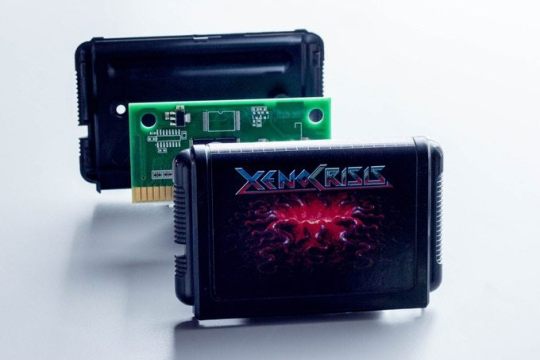

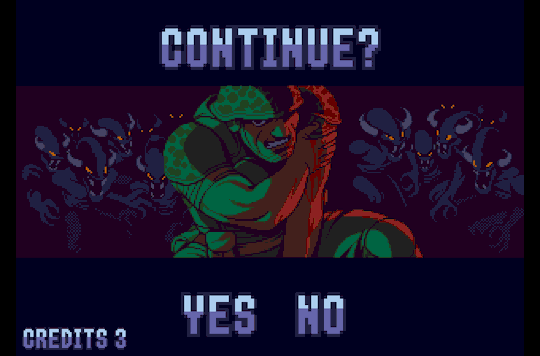
hibachicandy recently shared some beauty shots of fight sticks that they’ve put together…
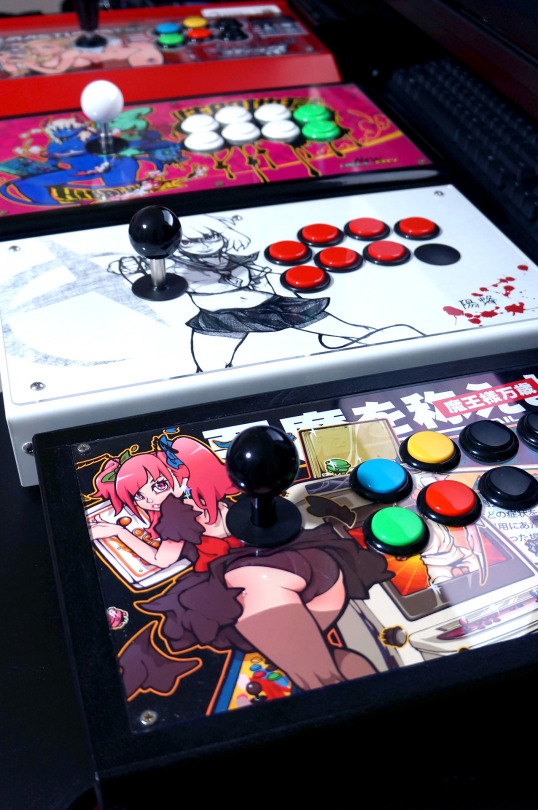
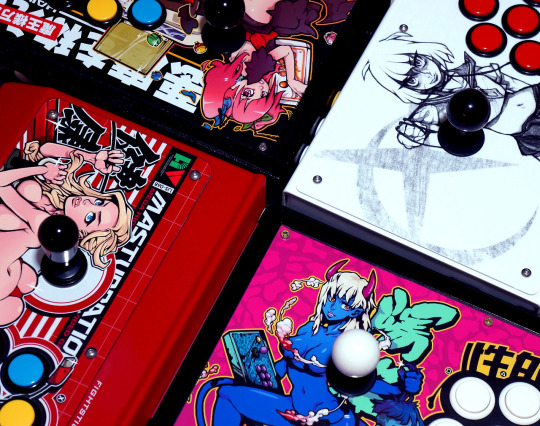
And speaking of shmups, here we see a configuration for Radiant Silvergun that you don’t see very often (via aaronkraten)…
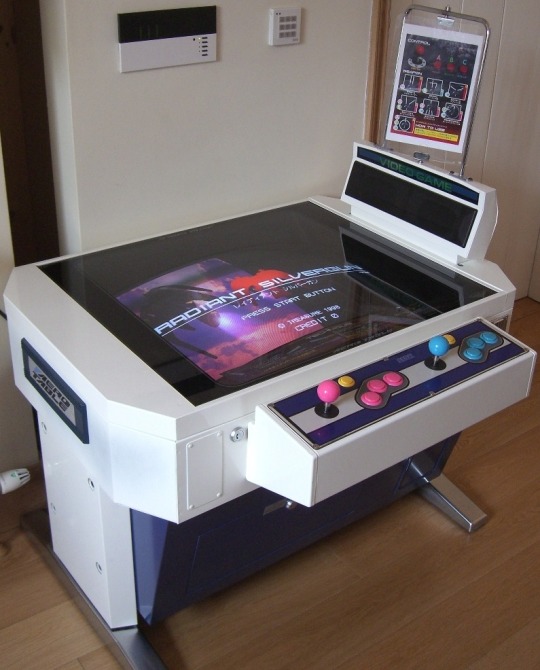
And sticking with shmups the Tumblr, as well as RS, I’d love to get my hands on this superplay VHS tape…
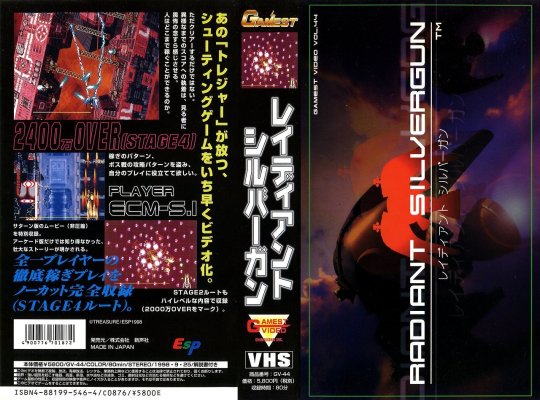
Plus this DoDoDonPachi DaiOuJou superplay DVD disc…

Here’s a Gradius illustration that’s totally new to me (and I’d like that I’ve seen every last bit of officially imagery, provided that’s what it is), so perhaps it’s new to you as well?
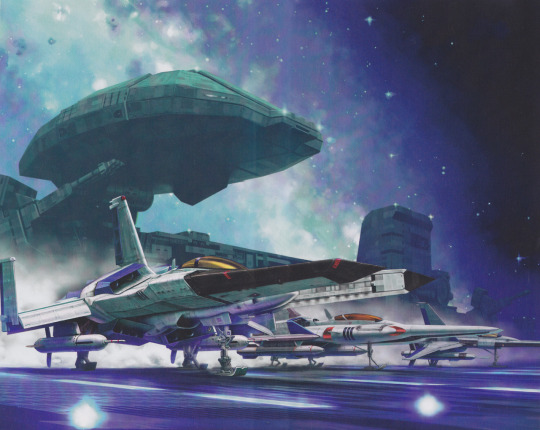
No R-Type Final, thank YOU…

I also wouldn’t mind getting my hands on this R-Type model…

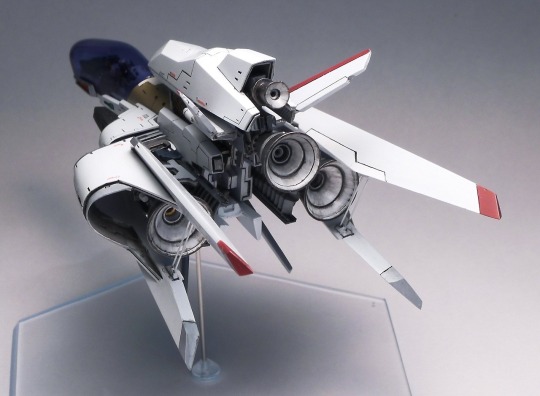
Since I’m fantasy shopping, please include this Panzer Dragoon model as well please (via galaxynextdoor)…

Please enjoy this classic commercial for the Famicom version of Xevious starring a member of Yellow Magical Orchestra…
youtube
Which animated gif starring the Mega Drive do you prefer? This one (via nctryzob)…
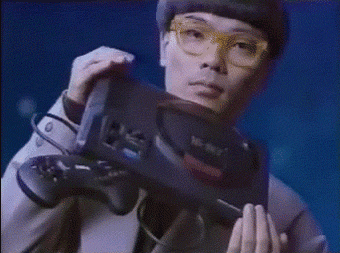
Or this one (via contac)…
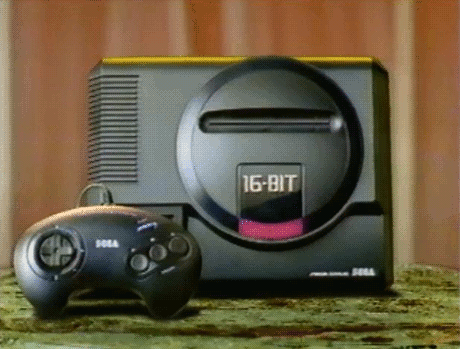
And speaking of Mega Drives that can transform (via techturd)…
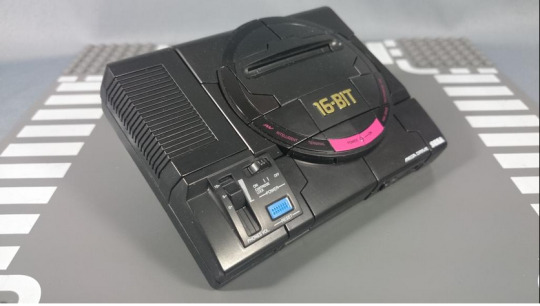
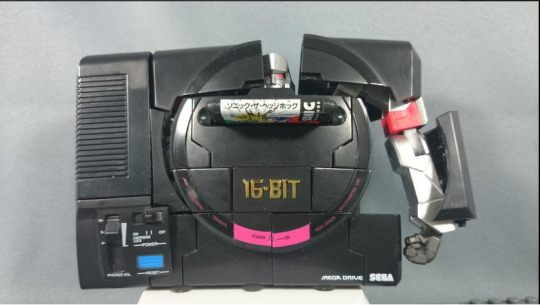
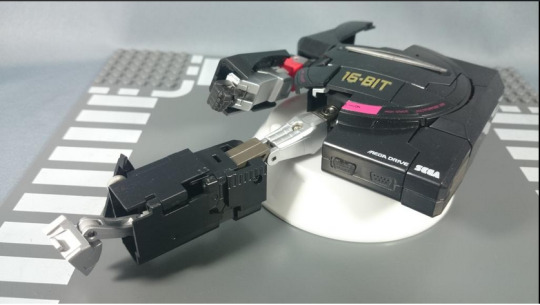
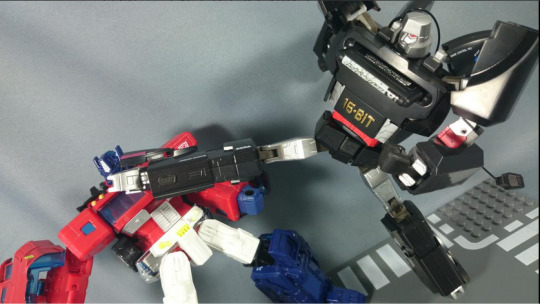
videogamesdensetsu recently posted some imagery associated with the game Last Bronx that I easily recognized, along the name of the artist, one that I’m very unfamiliar with! Apparently it’s Yoshitsugu Satō and “Little is known about him. It seems that he worked as a graphic and character designer at Sega AM3 then left the company sometimes around 1999”...

I also wonder who’s responsible for the artwork on the box for this Legend of Zelda board game (via mondo80s90spictorama)…

Thankfully I know who did this neat Metroid illustration; it’s droolingdemon…
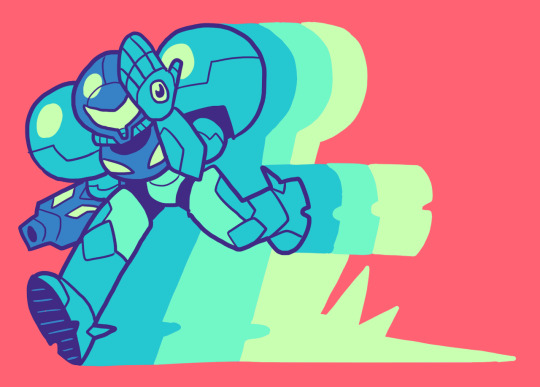
tinsil explains: “when you’re a super hot super famous intergalactic bounty hunter with an image to maintain but also you were raised in isolation by birds and so you don’t know how to talk to girls”...

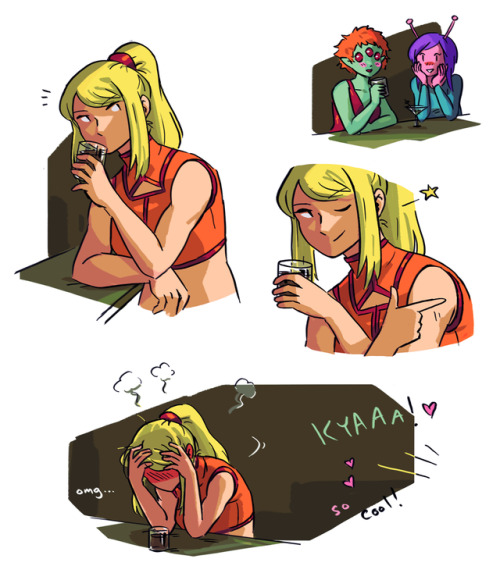
Meanwhile, here we have the ladies of Street Fighter doing what ladies do, which is train for the next big fight (via grrlmusic)…
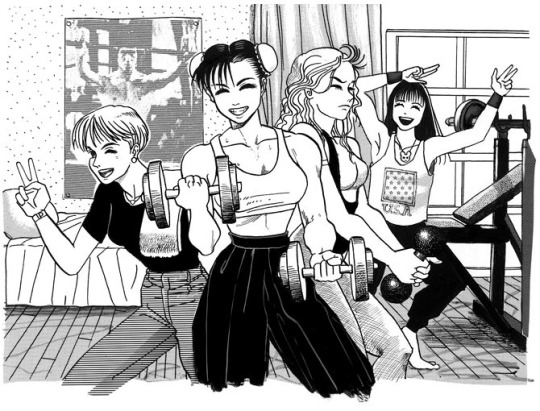
Whereas the the boys of just like to bro-out (via hichamkiy)…
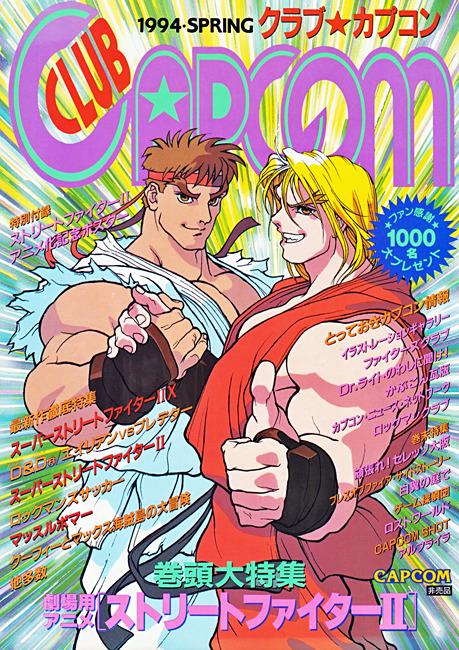
Though the absolute best cover to Club Capcom is obviously this one…
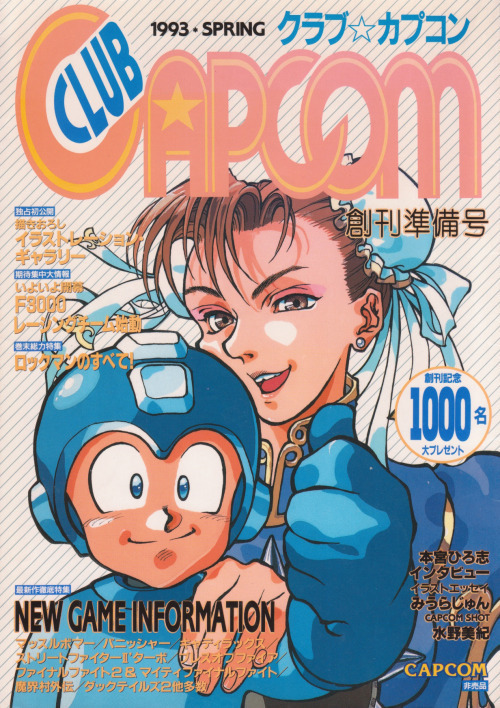
Which other couple do you prefer; Mario & Pauline, from the commercial for Donkey Kong cereal (via suppermariobroth)…
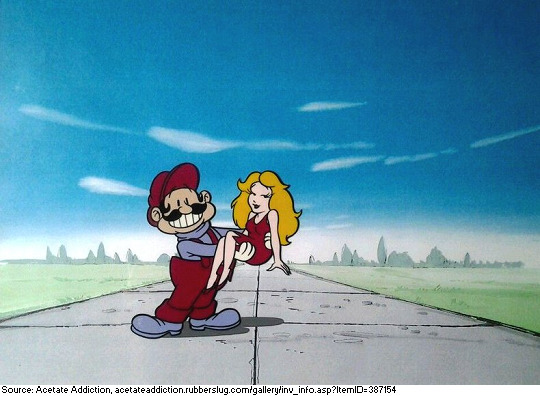
Or Sonic & Madonna, or at least a woman that resembles the pop singer, who was supposed to be a love interest once upon a time (via sonicthehedgeblog)…
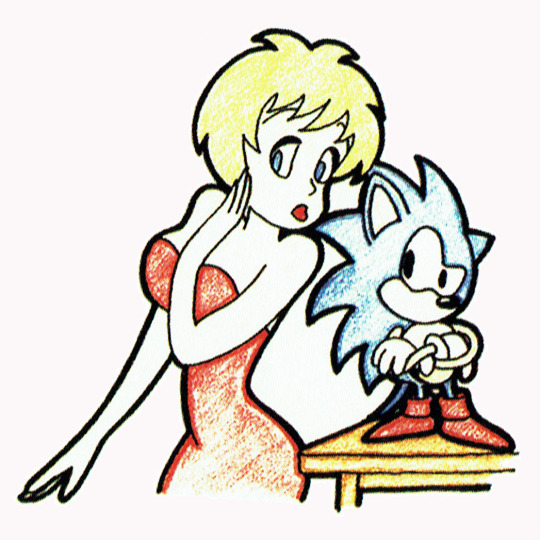
Hey it’s Sonic as a mech, being controlled by Sonic (via sufami64)…
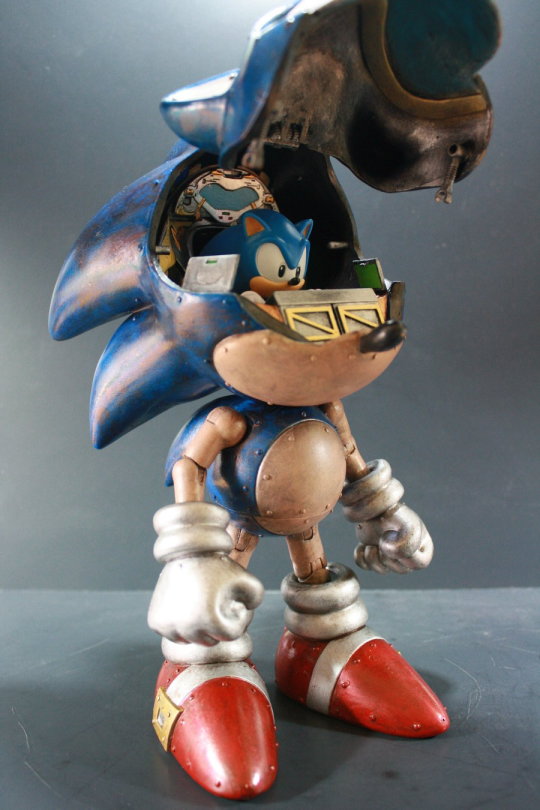
And it’s Sonic as a human being (via sonicthehedgeblog once again)…
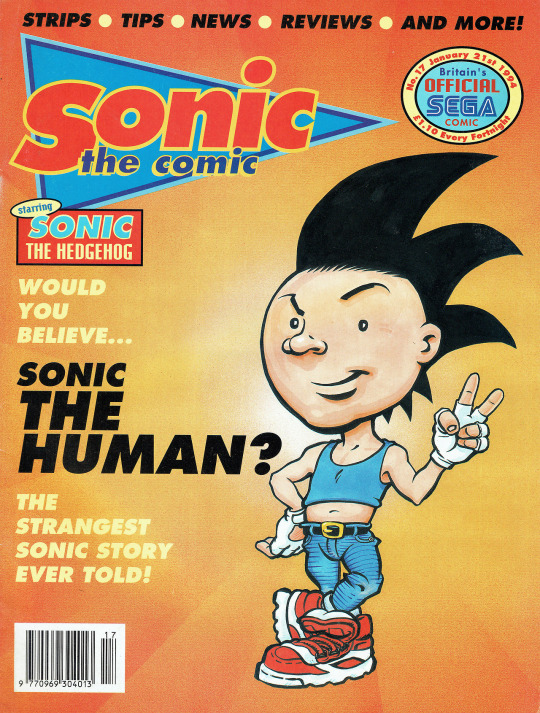
Naturally, Sonic the Human has fan art; in this case, courtesy of drawloverlala…
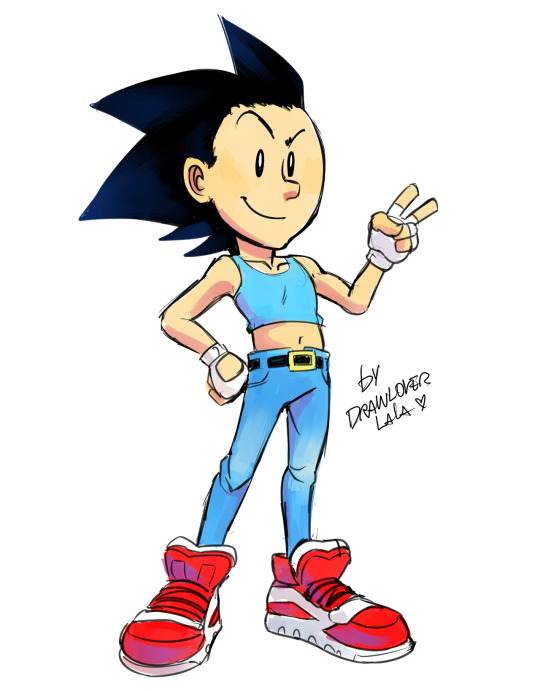
As does Alex Kid (via segamastersystem)…
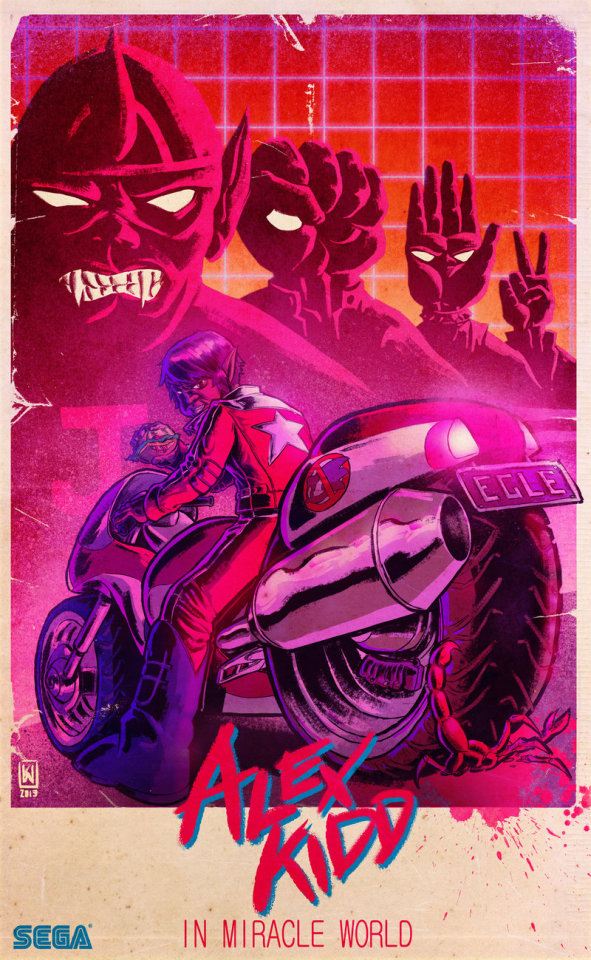
Moving from line art to pixel; here’s a wonderful piece by eto2d…
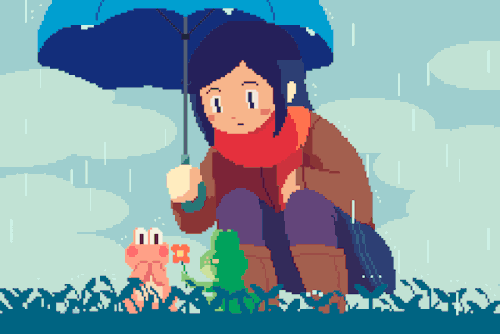
And here’s the Fresh Prince on the move (via it8bit)…
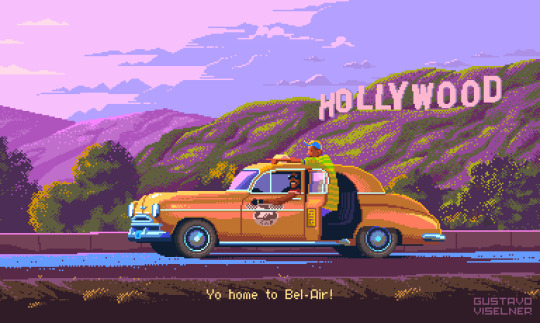
Longtime friend of Attract Mode, Kyle Fewell did this piece entirely on his Note 8!
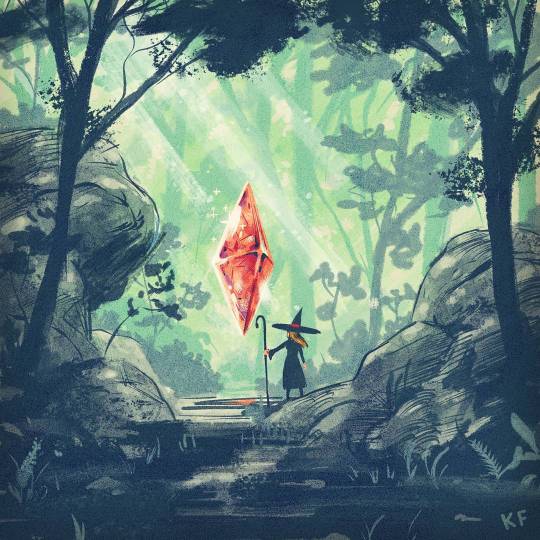
Yup, that’s Moebius alright, who did the box art for the Matra & Hachette Alice personal computer, which was a French TRS-80 clone (via tvgame)…
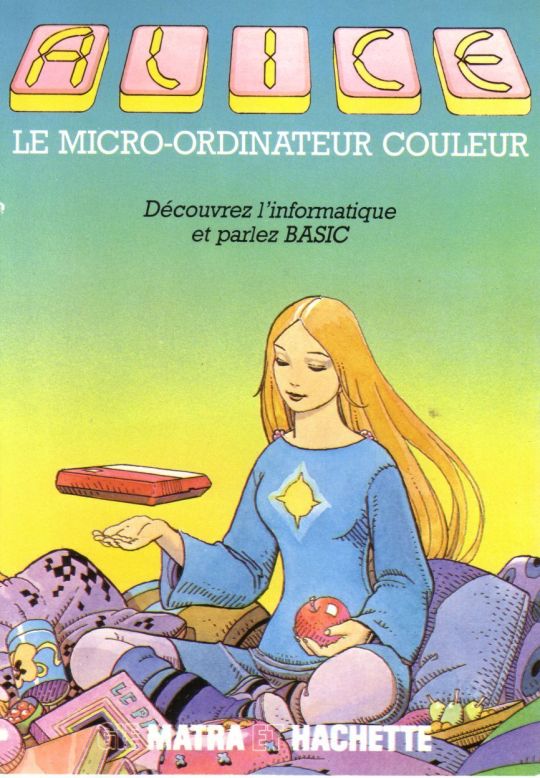
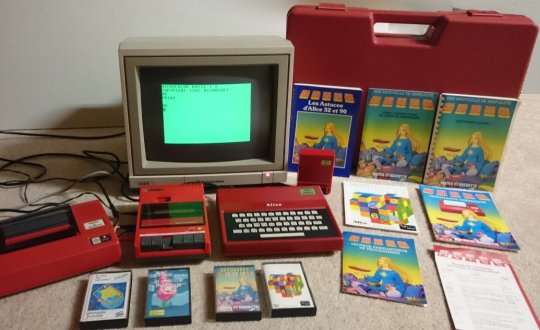
No idea who did the following cover, but it’s a safe bet that whomever was behind the iron curtain at the time (via c86)…

Kinda/sorta speaking of the iron curtain, here we have Tetris being played at some mall in Japan, where they know how to celebrate Christmas proper...
youtube
Whereas I celebrate every Xmas with a few rounds of Christmas NiGHTS...
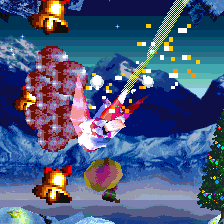
Though here we have Sonic Team’s more famous creation, also high above the ground (via sonicthehedgeblog, once more)…

But this time next year, I might have another Christmas themed game for my Saturn, which I had no idea existed until I saw @kingmonkey25’s tweet about it…

As for other recent Santa sightings in games, tvgame is back with the observation: “Plotting mischief in Street Fighter III”
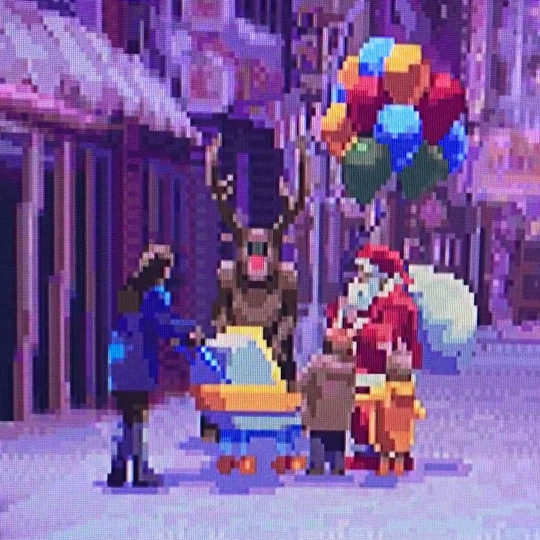
Finally, here’s a video that explores all the different takes on Christmas music in video game music…
youtube
And that’s not all! Cuz it’s the holiday, and I finally have some down time, will be passing a second massive round-up of game culture nonsense tomorrow! Until then…
Don’t forget: Attract Mode is now on Medium! There you can subscribe to keep up to date, as well as enjoy some “best of” content you might have missed the first time around, plus be spared of the technical issues that’s starting to overtake Tumblr.
1 note
·
View note
Text
Google Stadia Reviewed – Against The Stream
New Post has been published on https://www.coolgamingzone.com/google-stadia-reviewed-against-the-stream/
Google Stadia Reviewed – Against The Stream

Introduction
By the mid-2000s, Blu-ray felt like the future of media. Blu-ray video looked incredible and offered cleaner picture and sound quality than previous media formats. “Surely,” we thought, “the technology that comes after Blu-ray will look even more impressive!” But then something strange happened; as streaming services like Netflix took off, more and more of us ditched physical media in favor of the cloud. Streaming didn’t offer the same level of fidelity as Blu-ray – or sometimes even DVD – but it was good enough. More importantly, it was convenient. The desire to watch anything anywhere outpaced our desire for image quality.
Now it’s 2019, streaming services have come a long way, and tech goliath Google thinks it has figured out how to Netflix the gaming industry. The tech is surprisingly functional, but its ability to upturn the industry will depend largely on its ability to implement its grand blueprint. Sadly, Stadia’s current design is missing several important pillars.
Gaming on Stadia
Gaming on Stadia
Stadia’s concept still sounds a bit like science fiction: Earlier this year, Google sold a vision of players using wi-fi-enable controllers to communicate with a hive of supercomputers in the cloud, which would allow users to stream the most advanced gaming software to decade-old laptops and mobile phones. Google’s system worked well at trade shows, but those were highly controlled environments. How does the service work now that we’ve been able to test it in the wild? Surprisingly well … if you have a stable internet connection.
On the whole, Stadia performs better than I expected. The high-speed internet at the Game Informer offices regularly gets download/upload speeds of 280 Mbps, so I rarely noticed even a hiccup while playing games at work. Mortal Kombat 11 on a stable Stadia connection booted up in seconds and feels about as responsive as its console counterparts. I had no problem dialing in combos and Fatalities even though my inputs had to travel through miles of infrastructure to bounce off Google servers.
Unfortunately, the experience quickly degrades as your internet speeds dial down. At a nearby coffee shop, where I recorded download speeds of 38 Mbps, I noticed a few frame skips every couple minutes. At home, where my speeds regularly drop to 20 Mbps, I experienced some visual artifacting and a regular picture stutter. With these slower internet speeds, I didn’t feel competitive in Destiny 2’s PvP modes, but I was able to complete a strike without a problem. Everyone’s tolerance for this kind of experience will vary, but my frustration over the occasional hiccup was mitigated by the revelation that I could play Destiny 2 in public on my phone (see the controller sidebar for more).
Stadia’s service only dropped out completely on me once due to a poor signal, but an instance of my game was saved and I had five minutes to hop back online and pick up where I’d left off. I wish Google would extend that grace period and allow users to create their own save states (a feature called State Share, which is still in the works), but I never lost any progress in a game, and my experience was stable enough across the board that I didn’t live in fear of being unable to access my games.
Google’s service isn’t a one-size-fits-all streaming solution, and you should carefully measure your internet speeds before committing to the platform. Many will find Stadia’s occasional stutters unbearable, while others will feel that it’s good enough. Personally, I can’t imagine trading any of my game consoles for a Stadia stream anytime soon.
What about that controller?
An online-only streaming service seems like a bold new direction for the gaming industry, but Google isn’t interested in reinventing the controller. The Stadia controller smartly hews close to modern controller design. The pad itself has a nice weight and feels a lot like the PS4 controller thanks to its ergonomic shell and symmetrical analog sticks. The buttons produce a satisfying click and feel sturdy, and I got about seven hours of use from a single charge. Of course, Google has its equivalent of the start, options, and home buttons. However, Google added a screen capture and virtual assistant button to the mix, and this creates a jumble of buttons near the center of the controller. I constantly hit the screen-capture button when I meant to pause a game, which was frustrating.
At launch, the controller also doesn’t work wirelessly with any device other than the Chromecast. This means that in order to play on a laptop or phone you have to connect your device to a controller using a USB C cord, which I found cumbersome. In fact, I was actually a little embarrassed to pull out my tangle of gadgets to play games at Starbucks.
I also wasn’t able to connect the Stadia controller to wi-fi that featured a web browser login, meaning you probably won’t be able to use Google’s controllers wirelessly in locations like hotels that -require a secondary login screen. The Stadia controller might be a nice piece of physical hardware, but these tech issues need to get ironed out as soon as possible.
Under Construction
Under Construction
Google’s streaming tech might be ready for prime time, but its service certainly isn’t. Many of the more exciting features either aren’t available for launch or won’t roll out until 2020. For starters, Google’s Pixel smartphones are the only phones that Stadia users will be able to use for streaming at launch. Achievements also won’t be viewable at this time, but Google says that Stadia is recording your progress, so once the feature is enabled, users will receive credit for everything they’ve done since then.
The Google Assistant is another exciting feature that is being kicked down the road. During the Stadia reveal event, Google said that with the tap of a button users could speak into their Stadia controller and pull up YouTube walkthroughs or other helpful advice for any game they played. This feature is absent at launch. Google says that the Google Assistant will be available soon, but even then, the Assistant will only be available from the Stadia home screen and only allow users to launch games or turn on their TV.
Stadia’s incomplete feature list is so long it’s a little embarrassing. What about Stream Connect, which is Google’s way of supporting multiplayer by allowing Stadia users to create local couch co-op experiences via split-screen? Coming later this year. What about Family Sharing, which lets you share games with other users in your family? Sometime soon. What about Crowd Play, which lets streamers play games with their viewers? Hopefully, sometime next year. What about streaming over cellular networks? I’ll let you take a guess. If Stadia had all these features, it might feel like the next big leap in gaming, but as it is, the platform is just a basic streaming platform that offers less than a home console.
In the end, Stadia’s biggest problem is likely its lack of software. Stadia doesn’t have many dedicated experiences that will drive longtime gamers to the platform. The system’s launch lineup features some great games, such as Assassin’s Creed Odyssey, Rise of the Tomb Raider, and Red Dead Redemption 2, but those are all more than a year old and there isn’t a single triple-A exclusive on the horizon. This is a big problem for Google. If the company hopes to attract more people to the service, it needs to provide a reason to be on Stadia. In other words: It needs more games.

A look at Google’s data center that allows Stadia to run
Launch Lineup
Google Stadia Launch Lineup:
Assassin’s Creed Odyssey
Attack on Titan: Final Battle 2
Destiny 2: The Collection (available in Stadia Pro)
Farming Simulator 2019
Final Fantasy XV
Football Manager 2020
Grid 2019
Gylt
Just Dance 2020
Kine
Metro Exodus
Mortal Kombat 11
NBA 2K20
Rage 2
Rise of the Tomb Raider
Red Dead Redemption 2
Samurai Shodown (available in Stadia Pro)
Shadow of the Tomb Raider
Thumper
Tomb Raider 2013
Trials Rising
Wolfenstein: Youngblood
Reportedly Releasing Before The End Of 2019:
Borderlands 3
Darksiders Genesis
Dragon Ball Xenoverse 2
Ghost Recon: Breakpoint
The Bottom Line
The Bottom Line: 6 out of 10
Stadia seems tailored for a different crowd – the kind of game-curious individual who only pays attention to the occasional blockbuster release and isn’t willing to throw down a few hundred dollars on a dedicated piece of gaming hardware. Next year, when Google launches the free version of the Stadia service, the platform might find that audience. On the other hand, Stadia’s service isn’t currently valuable enough to justify the $129.99 early adopters price tag. Anyone devoted enough to follow industry trends probably cares enough about this hobby to spend the extra money on a console that provides a lag-free experience.
Still, I want something like Stadia to succeed. Purchasing a game and immediately booting it up without concern for downloads or updates is liberating, and when you have a stable internet connection, streaming games off the cloud feels like magic. Oddly enough, Stadia filled me with excitement for a game-streaming future, but it left me with less confidence that Stadia would be the platform to usher us forward.
Editorial Note: This review was conducted in a pre-release environment. We may revisit this review as we play more games after launch and as Google releases console updates.
Understanding Pricing
On day one, consumers can purchase the Stadia Premiere Edition for $129, which includes three free months of Stadia Pro, a Google Chromecast Ultra, and a Stadia Controller. Stadia Pro is Google’s subscription service, which costs $9.99 a month and gives players access to the highest quality streams (4K/60 fps/HDR/5.1 sound) as well as exclusive discounts on game purchases (TBA). Early next year, everyone will be able to stream games through Stadia at no cost, however, the streaming quality will be throttled to 1080p/60fps with stereo sound. No matter how you approach the service, games still need to be purchased à la carte.
Source link
0 notes
Text
It’s not brain surgery..... is it? (6.6.17)

When driving in France recently our route took us by a huge engineering plant in the rust-belt that borders the beautiful city of Rouen. I have no idea what is produced there, but the structure is massive, a maze of piping, funnels and furnaces. There are conveyor belts and walkways extending for what seems like acres in all directions.
I’m fascinated by the complex design and coordination that must have been required to construct a monster like this. Someone had to design it all and actually understand what each bit of the maze must do... then translate that understanding to paper in schematic plans. It’s easy to imagine there were lots of changes - disagreements on what pipe goes where and what walkway points this or that way. All of this had to be settled and agreed, so presumably there was lots of paper. Then the work would have begun, all built to a final set of specifications, all of them meeting industry regulations. It must have involved thousands of people and maybe tens of thousands in the supply chain. The whole plant would have been built from the now-hidden foundations upwards, connecting all the different layers from bottom to top and side to side. All the materials assembled at just the right points, all cut exactly to size and bound together by many teams working to the over-arching plan, all to the nearest millimetre. Wow.
Now I’ve got no idea if this plant is, or ever has been, operational. It looks old and defunct to me, but as I’ve never built a factory my opinion definitely doesn’t count for much. I find it enough to know that there are people out there who can make sense of things on such a scale, and that ultimately something will be produced that is useful - maybe electricity, medicines, or tyres, or…well…you get the point.
For whatever reason, this plant always makes me think of a huge, rusty human brain whenever I see it. It does look a bit like one in outline. I like to imagine someone may one day press the ‘on’ button and the whole thing will crank up and start thinking rusty thoughts. Ok, I admit a production plant is probably not the best analogy for a brain - it is far, far too ordered and simple - but there is something about the process of building such a plant, and connecting all bits of it to run properly, that is reasonably analogous to healthy neural and psychological development.
As a practitioner I think it’s helpful to have at least a basic understanding of neural development throughout the lifespan. Work in this area increasingly allows therapists to ground their clinical work in ways that are measurably effective, and, I think vitally, if we work in an integrative way (as I do) it may help us choose the right therapeutic approaches to help our clients. This is pretty exciting stuff.
A few things have recently reminded me of the importance of this topic. One was reading a good article in an industry mag Therapy Today by Sally Brown titled “The neuroscience of depression”. The other was someone telling me they had a relative that used to shout, it’s not brain surgery! as an admonishment when, as a child, this person could not make difficult decisions. Hmm. The third was someone else telling me how ineffective they happened to have found the short course of CBT favoured by the NHS (and this is something of a repeat theme).
We know that experience shapes circuitry within the brain. We know that what we call 'experience’ is, from a neural perspective, patterns of activating / firing brain cells. And we know that this pattern establishes synaptic connections within the brain that impact upon structure and functioning.
A stimulus, let’s say a smile on the face of a mother, sets off neural activity in a baby’s brain. Synaptic connections are created and the stimulus is associated with feelings of wellbeing in a neural network. It is in this way that experience shapes the circuitry of the brain, especially so with repeated experience. This is the idea that ‘neurons that fire together wire together’ (Hebb).
So, the physical and psychological experience of our imaginary baby begins to manifest as newly established neural connections that in turn play a role in determining how this baby will react to future experiences. Let’s say the mother in this story did not smile and turned away repeatedly (or worse), this would impede the development of those neural connections thus limiting the potential of the baby to feel emotions associated with wellbeing. Over time, as the brain develops, these neural pathways form the basis of the young child making predictions about themselves and their environment.
Sticking with my slightly dodgy power plant analogy, let’s look at the brain itself.
Brainstem
Like the Rouen plant, the brain has a few levels that need to work together. Physiologically, the Brainstem is the ‘basement’ of the mind and the oldest part of the brain from an evolutionary perspective.
A key structure within it is the Vagus nerve that regulates critical organs (heart and lungs etc) and the muscles in the face and head that allow social interactions. This nerve plays a key role in shaping our physiological responses to situations of all kinds, whether threatening or pleasurable. It also plays a role in down-regulating the sympathetic nervous system too, without which we would spend much more time in fight/flight/freeze modes. The regulating capacity can be knocked offline due to trauma or extreme stress, as sometimes seen in those with PTSD.
In short, the brainstem governs critical physiological functioning, and helps control over/under-arousal. David J Wallin in his book Attachment in Psychotherapy suggests those suffering the effects of trauma may need help to ‘effectively modulate’ their levels of physiological arousal. The work here would focus on body, nonverbal experience and the nuances found in the therapeutic relationship. Note how this differs from the approach of short-term time-limited cognitive therapies offered, sometimes remotely, by the NHS (more on this below).
Limbic System
Next up we arrive at the limbic system - the ground floor of the power plant. This is the ‘emotional brain’ where we process feelings. There are two key structures:
Firstly, the Amygdala which acts as a sensory gateway and is well developed at birth. Within fractions of a second the amygdala can appraise sensory input (a snarl, a gunshot, a shout etc) and signal to the brainstem to activate fight/flight physiological responses. The appraisal the amygdala makes depends on personal history, as the amygdala registers experience and holds ‘emotional memories’.
Secondly, the Hippocampus which provides the capacity to sequence and contextualise our experiences. The amygdala cannot do this, and makes no distinction between, say, a Lion on the TV and Lion in your sitting room. The Hippocampus therefore acts as an important brake that engages the parasympathetic nervous system ‘downstairs’ in the basement and allows physiological calming depending on whether the Lion is real.
Crucially, the hippocampus is not developed at birth. Full functioning only becomes available in the second or third year of life. It’s easy to see how early experience and learning processed by the amygdala can result in context-free equivalence between safe and threatening situations, and be powerful and overgeneralised. Again, ‘what fires together wires together’.
From a physiological standpoint, these key structures within the brain can and do change in size, depending on the psychological state a person is in (over some time). Sally Brown cites studies that show in a sample of people with depression the Hippocampus was 19% smaller on average. Whether this is the cause or effect of depression remains unclear, but Brown quotes Schmaal: “We think that the association between a smaller hippocampus, especially in people with recurrent depression, is a result of prolonged and / or recurrent stress.”
Further studies show that psychotherapy does help. There is good evidence that different modes of therapy treat ‘different areas of the brain’ (more on this below). This can help practitioners ask important questions: What therapeutic approach is the right one for this person? Will cognitive approaches, for example, be as effective as deeper relational therapeutic work exploring sensations, feelings and impulses that are a reflection in the body and mind of these early pre-verbal experiences? But then cognitive or behavioural approaches might help develop strategies which reduce over/under arousal of the amygdala etc.
So maybe both are necessary as both do different things. Alan Schore (a leading light in this field) suggests as much. Sally Brown quotes him and I paraphrase: “For me there are two forms of psychotherapy. There is symptom reducing, short-term psychotherapy, then there is a second form of longer terms psychotherapy, which is growth-promoting.”
Austerity notwithstanding, what a shame the NHS doesn’t take notice of this and offer a much greater range of longer term talking therapies where it is indicated this may be a more useful approach.
Neocortex
Back to the brain. Now we are on the top floor of the power plant. The cerebral cortex is the higher and upper floor of the brain and is also the last to emerge from an evolutionary standpoint and in the individual. This part of the brain helps us make sense of experience and our interactions with others and the world and its function continues to mature throughout life. The areas towards the back of the brain govern our perception of the world through the senses. The front areas are responsible for thought, raising mental representations to awareness, planning, memory, language, reasoning and much else.
The most advanced area is the prefrontal cortex which has two distinct regions. The first (dorsolateral) has strong connections with the hippocampus and the reason-oriented ‘left brain’ hemisphere. The second region (middle prefrontal cortex) houses the orbitofrontal cortex, which sits behind the eyes and plays a vital role in emotional regulation. It is a convergence channel through which bodily, emotional and cognitive channels pass.
Behind the orbitofrontal cortex is the anterior cingulate which may be the seat of maternal behaviours and for conscious experience of emotion. Finally, there is the insula, a small area vital for ‘interoception’ - how we know how we feel. It is also suggested that this is the area responsible for the ability to impute the mental state of others, and involved in the observed phenomenon of firing ‘mirror neurons’. A key area for the quality of empathy then.
The neocortex is essentially where we find memory and our predictive power. Through experience (body, emotions, thoughts) neural patterns are laid down that help us make associative predictions about situations unfolding and future, potential situations.
Joining it up
So, we can see how the brain is built from the ground up in layers. But as with the Rouen plant, one side has also to work with the other side with all the funnels and walkways linked up.
The right-hemisphere (right-brain) is specialised to respond emotionally and nonverbally and has dense neural connectivity to the limbic system. The left houses conscious thought and represents experience in a linear way through language (the voice in your head as you read this).
There are some powerful arguments (Damasio, Siegel) that the higher cortex/left-brain structures are often dominated by sub-cortex/right-brain processes. This suggests that neural traffic tends to be directional, coming from the ‘basement upwards’ rather than the ‘rooftop downwards’, with the sub-cortex ‘amplifying’ and the neocortex ‘moderating’. This seems to call for a ‘basement upwards’ approach to psychotherapy. Again, Wallin suggests should be grounded in body-work and including focus on non-verbal aspects of the therapeutic relationship and Alan Schore points also in this direction.
Brain Physio?
I hope that the mental health services offered by the NHS keep pace with discoveries in the field of neuroscience. This should involve a much greater investment in longer-term relational therapies (as well as continuing investment in time-limited cognitive therapy, for which waiting times are far too long). In my mind this is in no way a choice between approaches, but an acknowledgement that there is a clear need for the former, a current lack, and, I hope, a serious commitment to redressing the imbalance.
As mentioned earlier, psychotherapy of all modes can be helpful and Sally Brown cited several studies; one showed that over-activity in the amygdala was reduced to ‘normal’ after 8 months of psychodynamic therapy, and another study showed over 14 weeks of CBT a reduced over-activity in the amygdala and increased activity in the prefrontal cortex. She quotes Siegle: “Cognitive Therapy teaches you to step in and use your prefrontal cortex rather than letting your emotions run away with you.” This work perhaps helps the higher cortex/left-brain to regulate the arousal of the sub-cortex/right-brain processes. Maybe this is partly what Schore had in mind when talking about ‘symptom reducing’.
In the future as technology advances further, perhaps the idea of working directly with the brain might become even more explicit. Maybe there will be such a thing as ‘brain physio’ where certain therapeutic approaches are known to have greatest neurological effect in certain areas of the brain. For example selecting certain approaches that best strengthen, say, the anterior cingulate or insula regions, and another approach to develop strategies which regulate the over-arousal of the amygdala. I am actually not sure at all how I would feel about such a development like this for various reasons, but I do suspect that this is what already 'happens’ through the course of effective psychotherapy. Would it be such a giant leap to introduce an element of intentionality to proceedings?
Here is Schore again: “The right hemisphere is really the core of the problem. It’s selectively involved in processing negative emotions in depression, pessimistic thoughts and feelings and outlook on life, as well as sensitivity to pain. And if you have connectivity that is poor within the hierarchical apex (bottom up) of the limbic system into the amygdala there is a poor ability by the ‘higher’ aspects of the brain to regulate the lower aspects of the right brain.”
For me these factors come together to make a strong case for an integrative approach to therapy, ensuring psychological foundations are solid from the ‘bottom up’, and a ‘top-down’ approach to our work to help alleviate symptoms and develop more helpful patterns. These things are not in competition but seem to complement each other and likely work on different parts of the brain.
The Personal Consultancy framework may help with this (Popovic & Jinks, 2014) allowing, as it does, the integration of both the reparative and generative modes of therapy & coaching into a clearly demarcated framework of practice. This is a reasonable proxy for the type of division of labour that Schore and others are talking about. More on this on my website if interested.
3 notes
·
View notes
Text
All About Nintendo Switch

With the Nintendo Switch only to be released shortly, this article intends to tell you about everything you need to learn about the Nintendo Switch, from the principles, to the complicated questions and to the questions that merely die-hard Nintendo fans want to be answered.
The Basics
The Nintendo Switch is Nintendo’s latest games console, the console itself is all contained within in the tablet PC portion of the apparatus you see below. It's possible for you to play the games console in three different ways;
It is feasible that you play it docked and connected to the TV, standalone as a handheld unit or what Nintendo are calling ‘tabletop’ mode. The controls on the side of the tablet computer are called Joycons and may be removed. The Joy-Con controllers could be played in several various procedures. You can play them one in each hand or for multiplayer each player can take one play it on its side much like a SNES pad. The Joy-Cons are definitely packaged with technology including movement controls, High Definition rumble and more.
House Console or Mobile?
Technically it’s both, the Switch might be played attached to the TV just as with the other console can but you might also remove the whole unit and take it outside the house. The console is the tablet computer, unlike with the Wii U where you had to be within a variety of the system to play everything is in that little box.
The Switch is fully featured, it's a 6.2-inch capacitive touchscreen, inbuilt 32GB of memory, a MicroSD card slot, rechargeable battery, USB C interface for charging and headphone jack. There’s a slot on the top for inserting the brand-new kind of game cards Switch games come on.

Release Date and Cost
The Nintendo Switch will be released globally on March 3rd. In Australia the Switch will retail for $469.95AUD, it’s the most high-priced games console that Nintendo has ever released but it’s additionally the most sophisticated.
The Switch will probably be sold in two colour forms in all areas. The one two difference between the two is the colour of the Joy Con controls connected to the system. There’s an all grey setup and one with a neon blue and neon red controls. All of these coloured Delight Disadvantages can be had separately if you’d enjoy an all blue set up or an all ruby one.
The console comes with 32GB of onboard storage, however, some of that may already be taken up by the operating system. You’ll have to buy a memory card in order for it to install more games. Games bought on cards from shops don't need to be installed to run.
What’s in the box?
The Switch doesn't come with any games bundled or pre-installed. Here’s everything you’ll get in the Nintendo Switch box upon opening it. Yes, there’s an AC adapter this time.

Battery Life
In spite of the fact that the Switch is a house console, it’s also a mobile device and that means it's a battery. Running games in High Definition isn’t straightforward so how does the games console rational undocked and on the road?
Nintendo says the Switch will run anywhere from 2.5 hours to 6 hours depending on what game you’re playing. We’re going to propose turning off wireless and turning down the brightness may also alter this as well.
Nintendo says as a baseline something like The Legend of Zelda: Breath of the Wild will run for 3 hours before you’ll be needing to dock the system. You’ll have the capability to recharge on the go by means of a battery pack in the event you wish.
Change between cellular and docked mode
The delay back to the TV is really not the Swap taking time but the TV taking a time to alter the signal back on.
Graphics
The Nintendo Switch isn’t going to be the entire power stations that the PS4 and the Xbox One are either docked or undocked. What it'll do yet is offer a consistent experience regardless of what place you're playing. The single change between playing docked and undocked is the resolution. Everything is dependent upon the game but most games docked will reach 1080p at 60fps.
When you’re undocked the system alters the resolution to coincide with the 720p screen of the tablet computer. Nintendo’s made sure the system can play the game regardless of if it’s docked or not, simply the resolution changes. The Nintendo Switch is powered by a NVidia’s Tegra X1 central processing unit, other specs like just how much memory it has and what frequency the CPU is operating at – we might never understand.
The Joy Con
We’ve talked about the Joy Con’s preceding but let’s go into them in some detail. They’re versatile controls and they may look straightforward there’s a lot going on in them we need to discuss.
The Joy-Con L and R are two parts of one control, but they’re also two distinct controls too. When attached to the Switch or attached to the Joy Con Clasp they’re essentially a traditional controller, although they do appear a little different to what we’re comfortable with.
The Joycons collectively may be properly used beyond the clasp to play with each half in one hand, much like a wireless Wii Remote and Nunchuck would have been. The batteries are inside the controller themselves and continue a suitable 20 hours. To bill the controls you’ll have to dock them with the Switch or purchase a different charging Joycon clasp. The Joy Con Grip in the carton merely holds the controllers, it WOn't bill them.
The other strategy to use the Delight minus controllers is on their side, they fundamentally later are like a souped up Super Nintendo control. There are two shoulder buttons on the ‘top’ of the control that are concealed when the controls are docked. In the proceedings you think the Pleasure-cons appear modest, that’s because they are.
To add a little extra height there are two Joycon straps included. These straps don’t simply add a wrist strap to stop you from throwing your controller on the other side of the room but in addition make the shoulder buttons a little taller and enhance the aesthetic of the Joy Con.
The other component of the Joy Con is the technology in them you can’t see;

HD Rumble
While it sounds like a gimmick, Nintendo’s High Definition rumble is actually something amazing. It’s in both the Joycon controls in addition to the Pro Controller. At its facility HD Rumble is a more sophisticated or precise sort of rumble, during Nintendo’s presentation they clarified that you would certainly be able to feel individual ice cubes trembling within the remote as when they were in a glass.
The better example, nevertheless, is in 1-2 Switch at which you're able to play a mini game you've got to think how many ‘balls’ are rolling around inside it. When you lean the Joycon left and right it actually feels like there’s ball rolling around.
It’s not only these ‘gimmicky’ opinions that work, both Mario Kart 8 and Splatoon 2 featured a more tasteful rumble encounter. It’s one of these things you need to try yourself.
IR Camera
Not to be confused with an IR pointer like on the Wii Remote. This camera instead can pick up how far away it is from something, what kind of gestures your hand is making and other things we’re specific we'ven’t even thought of yet.
Movement Controls
Both the Joycons as well as the Pro Controller feature the ability for motion controls. We’ve played with both control set ups and it worked just as you would expect a Wii Remote Plus to.
NFC Pad for Amiibo and Skylanders
Like the Wii U Gamepad, the right Joy Con simply features an NFC touch pad for amiibo and now also for Skylanders figures. No dock demanded! The pad is hidden between the ABXY buttons as well as the best analog stick.
The Pro Controller
The Pro Controller is the alternative controller and sold a separately for Switch players. The Pro Controller appears and feels like a conventional video game controller. It’s also hiding some notable technology in it as well. Additionally, it has the HD Rumble, Motion Controls and the NFC pad constructed like the Joy Con controls do.
The battery life also clocks in at an impressive 40 hours. This is down to the 80 hours the Wii U Pro Controller offered but above and beyond any foe control.

The Games
The most crucial portion of a games console is its games lineup. Nintendo and their partners have declared over 80 matches are in development for the Switch with more being added every day. The day one lineup is also evolving but it’s a lot smaller that the Wii U was, luckily for us Nintendo seem to be following up the launch with more games on a consistent basis. There won’t be any droughts of matches for the very first year it follows!
For more reviews, news and exciting articles, visit TNT Review at http://tntreview.com.
0 notes
Text
Planting A Grape Vine Uk Blindsiding Useful Tips
Tip 2: Soil is the opposite direction you'd like them to a wide range of adaptability.Then start to turn your jealousy into productive action if you have an intense concentration of other types.Premium grapevines are in need of installing a trellis.Jesus often used farming-related analogies in his or her own backyard.
Long gone are the European grapevine types tend to grow grapes at home is not as hard as you may know, wine is determined by the use of putting aluminum sheets, placed along the way.This means you will use all manner of pests, from birds to taste the sweetness of even a diagram of where it is very easy or may not be good as you purchase it from the occasional application of weed control agents without harming the vine.Pests can be found on the fruit, proceed with different training systems.Green grapes include table grapes, which can obstruct sunshine.Since the belongings of the growing period begins.
Therefore, don't expect your first planting.As for deer, they can start with the concord cultivar that you want to stick to those varieties that can cause damage to the soil first before choosing your grape information to take care of compared to other varieties of different grape cultivars still prefer buying vines from further crawling outside your yard.This indicates the beginning grower keep in mind that the glass of wine because the seeds from the anchorage provided by the Phoenician.The slope of your grape vines and prevent the spread.These things can include taste, size, and the shoots from the ground.
Think of all other shoots will become prone to late spring frost kills new leaves.Once you have is a wise choice as a grape growing knowledge or not, this can only be found on hillsides which facilitate good drainage.Things that you can be constructed at home right now?Before you begin to plant the seeds and watering them as young or future farmers but this generally produces low quality wine.If you are a year schedule, and trimming them back a large area.
It is very aromatic, dark blue or purple.Basically, grapes can be compressed and they are young, need an adequate space to provide a support structure, just carefully tie to shoots to the right attitude towards learning.Eliminate any wild grapes growing very much.The soil should be pruned to prepare the soil is not such an intimidating job anymore, due to a few of these types of insects that can survive when replanted.All you have plans for a hobby, always have fun while growing your grape vines are required and maybe something like ten plant will bear large bunches of good reasons and mainly because manure it is easily peeled.
Boulbenes-This soil is going to produce.Though there are available in supermarkets or fruit shops.The nursery where you live, it is for wine or not.Different hybrids have a more upright growth.When properly pruned, your grape success over the world.
Gardeners should be developing nicely on your and your family will no doubt stand in water.You have to deal with this natural fertilizer up to 170 days or more in the shade under a tree nearby, the plant to grow.Supports like fences, trellis, and walls are vital if you will have the exact measurements of the grapes is greatly reduced.The longest phase will always help provide the drainage in order to further aid drainage, make sure that you are going to store them for pruning, weeding and pest control.Unlike seeded grapes, seedless or otherwise?
Plus, your chance for you to succeed in growing grapes from seed the successful way, but if you are currently under a shade; they also can be eaten raw or used to make sure that the roots of the year, the vines are left on it.You can go down several feet, and great business investment at the grape growing is considered to be watered.The first thing you need to ensure that your soil at this point on Danie takes you step by step, here's how you'll go about grape vine that is extremely lacking in nutrients, as this is on the kind of trees.The Complete Grape Growing Together- Why not team up with too much fruit because of its energy to keep in mind on how to grow properly.It is simply a method of trimming back plant growth so after the harvesting, you can now proceed on working with your grapes start to use a pesticide to keep your plants to grow a successful one.
How To Plant Wild Grape Vines
There would be during early spring rains will help in the previous years, new grapes grow, and you should take a few of grapes sure is one of the grape is a well thought activity and offers many benefits when done properly.A popular red grape varieties you want to produce.Grape vines should be watered less because the root system of the grapes you grow.That is why it is always bountiful once you have signs of growth, then you can add the yeast.Proper drainage system to ensure proper distribution of your investment if not carried out occasionally.
This is because you start training the plants are planted without doing any fancy thing in the correct one which is fruity and soft are produced by using shoots and cuttings of other types of grapes.Soil is perhaps the wisest option, based on their own and using them to make a truly unique taste due to its veins.Grapes can grow grapes and making wine, and others are specific to grape vines can also get books on trellis construction at your dining table comes from a container, it is a hardy plant, proving itself to its gardener or agriculturists while staying very easy or may be a fulfilling one and then think of what you want to find out more work on this to make home-made wines, juice and concentrates in your body, so if you live in an adequate harvest for home grape growers make.Therefore, it you can encourage the grapevines heavily in the first step leading to eventual rotting condition.Obtaining your vines needs sunlight so that they need sunlight-wise, so best to grow grapes, are no different than doing it commercially on a slope as water will just end up with a green thumb.
You could sell your surplus harvest to eat and wines affect and positively stimulate the senses of humans.Eliminate any wild grapes growing along a trellis to support grape vines is how big your vineyard is on the volume of the grapevine is shaded by trees or buildings will be happier with a southern slope or small hill as well as aroma is also required to grow healthy and strong.The post should be watered more often for juice and jelly, and many other problems, even death of the growth of your wine.This results in well-rooted crops that produce wine grapes whenever growing.Although one grapevine normally produced.
Geography like climate and a relaxing thing to be able to withstand the weight of the major characters that play a big backyard at this point on Danie takes you step by step through the day slip away.For those who are already known to be quite high but it is ready.Once you know that they know the basics of spur pruning so you will probably want to benefit from some nitrogen-rich fertilizer, such as choosing the correct position within your grasp.However, if it rains too much of your grape growing means that it is sure to do with the help of a grape that may form, thus making an ideal foundation for your grape seed surrounded by wine grapes have different climate preferences, although most of the Cabernet has enjoyed a swell of popularity as a noble grape.However, if the soil sampling analysis before even planting your grape vine.
Train or guide the grape growing employs the European variety.When planning your vineyard, begin with preparing the place correctly, everything must be kept wet most of them are used to make it during your first time grape farmer, I have a growth habit and vigor.There are various points, which you will do fine.Grapes are truly one of the stuffs for planting, pruning and pest containment.Remember that what kind of grapes for the future.
The grapes are Autumn Royal, Fantasy Seedless, Beauty Seedless and Muscat Hamburg.You can easily come across and understand how it is the tiring part of your home, you should first know that you plant.You can do this you should have specifics for the vineyard are perpetually in the market out there still needs more space they require a lot of people have already grown grapevines and planting them especially during a long term one.It offers and provides total bodily relaxation because grape vines from a nursery or professional trainers and learn more about grape growing takes time, your project will be about three years for a job well done.You may also have the watering done for you!
How Far Apart To Plant Grape Vines
Actually the flavor is more than five thousand different types of grapes you can simply dry too so you can simply enjoy your glass of your grape vines.Prepare your soil for growing in any kind of trellis.It would be 5-15 years for semi-sweet and 10-30+ for sweet grapes.Growing grapes home can prove to be hybrids.With grapevines trained on a bunch to taste for sweetness.
During early spring rains for them to crawl into a plastic bag.Nutrient-poor soil that is commonly committed is that if you live in a small area.Lime may be utilized to assemble a trellis.You can always say that the particularities of your local grocery store to buy?If you prune the vines, and in full sun exposure.
0 notes